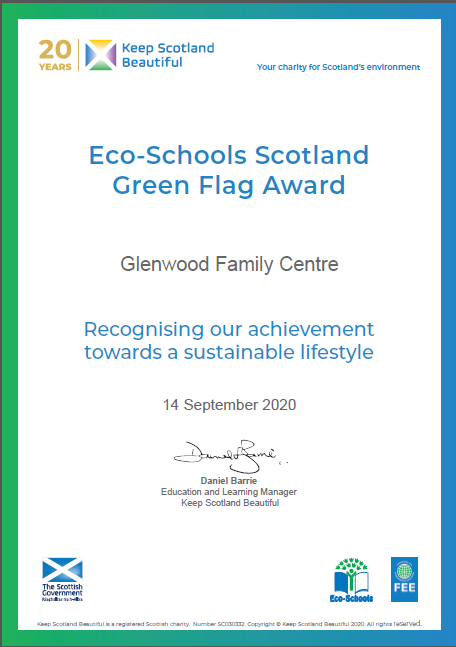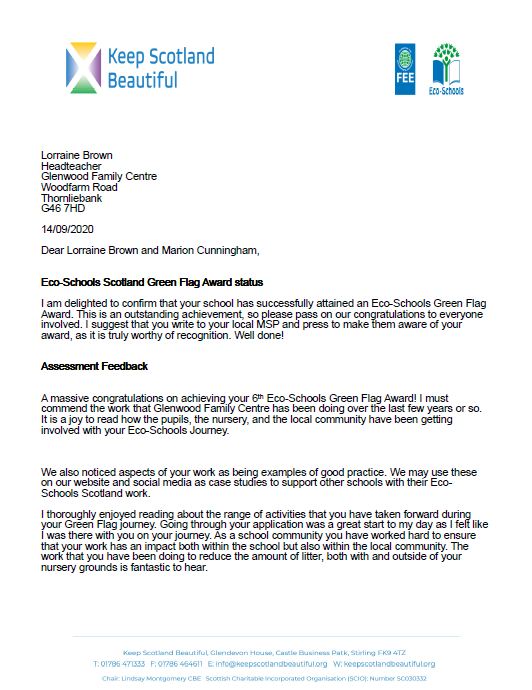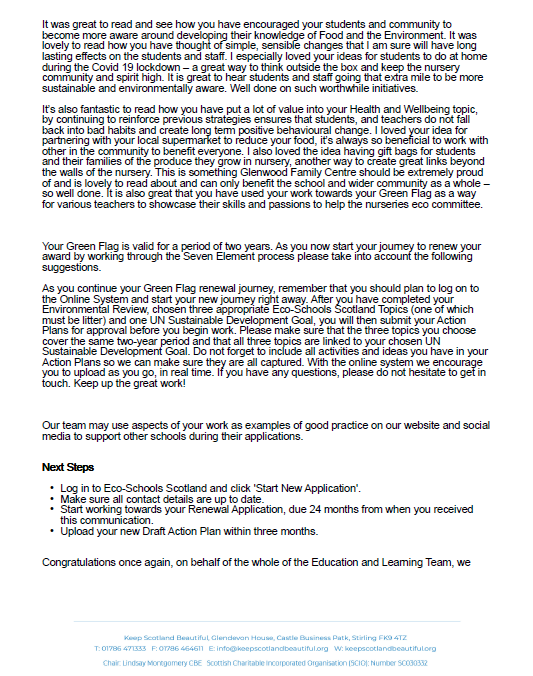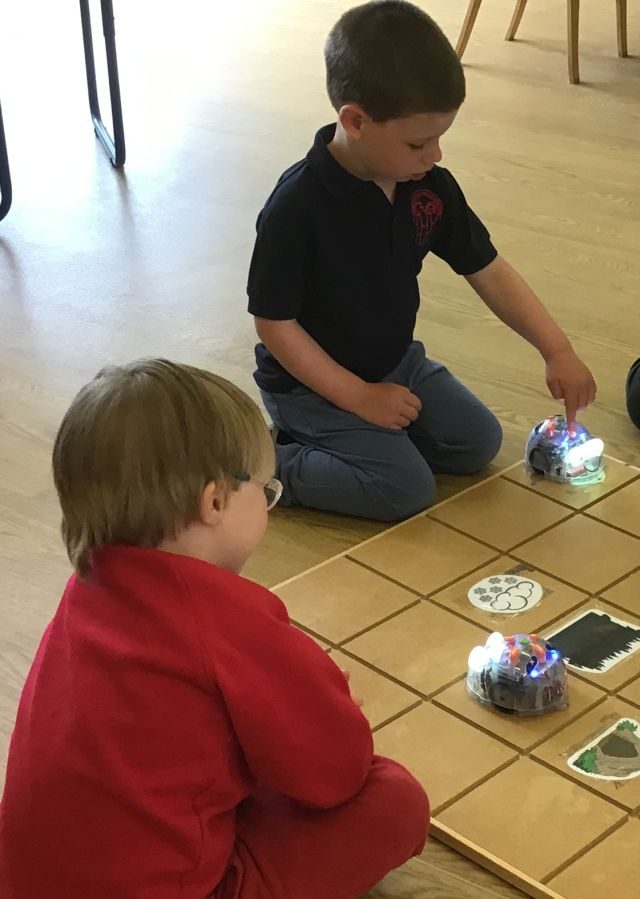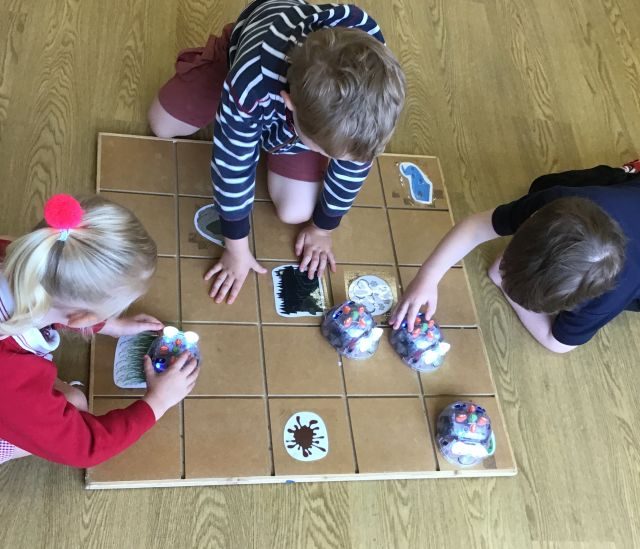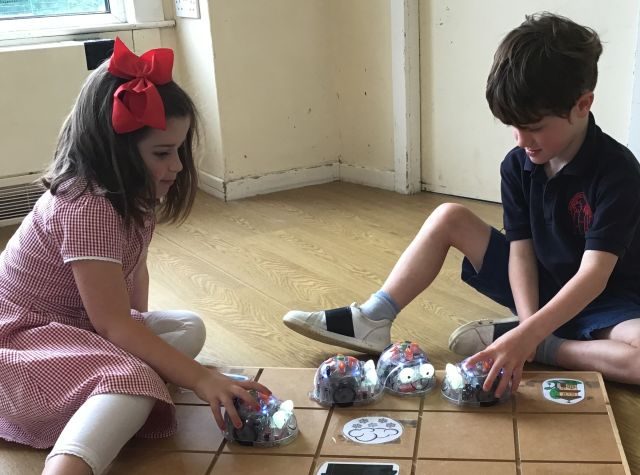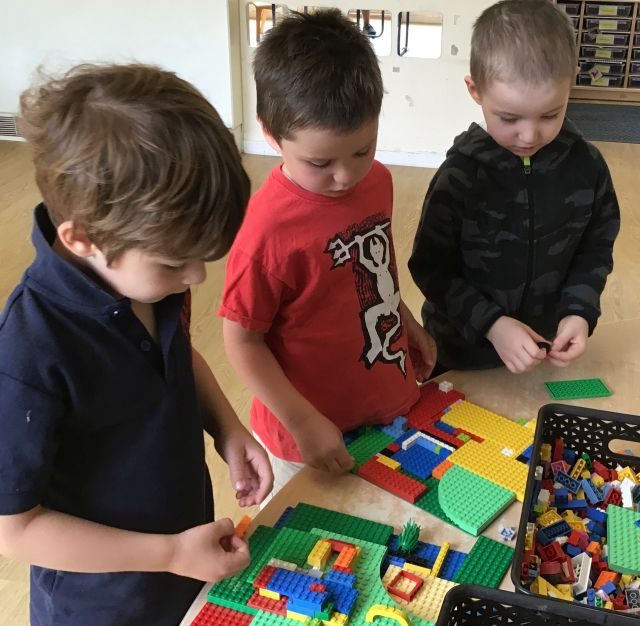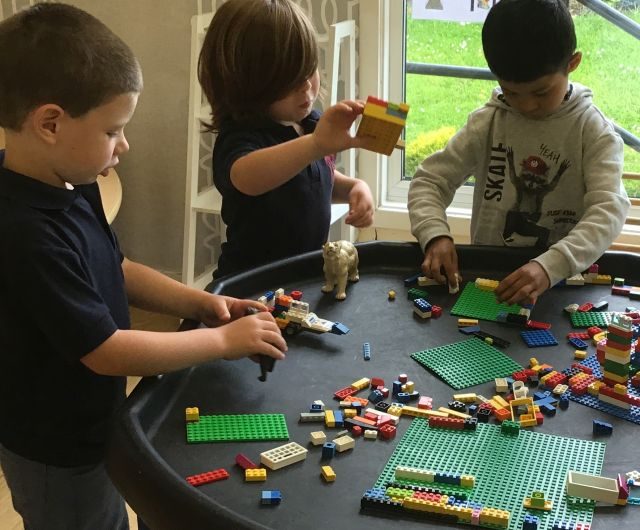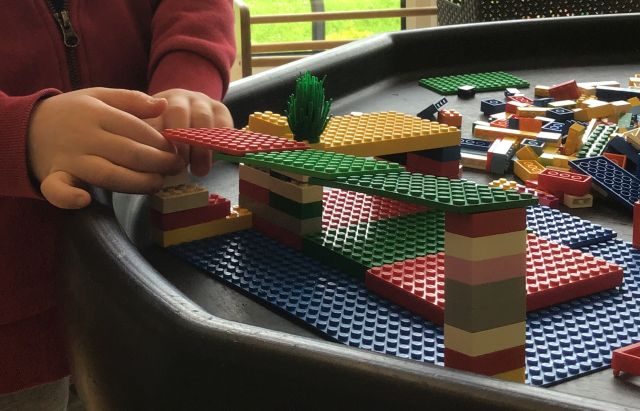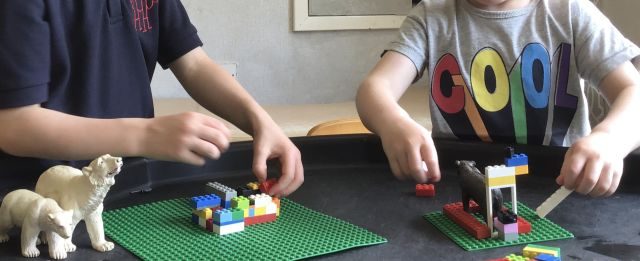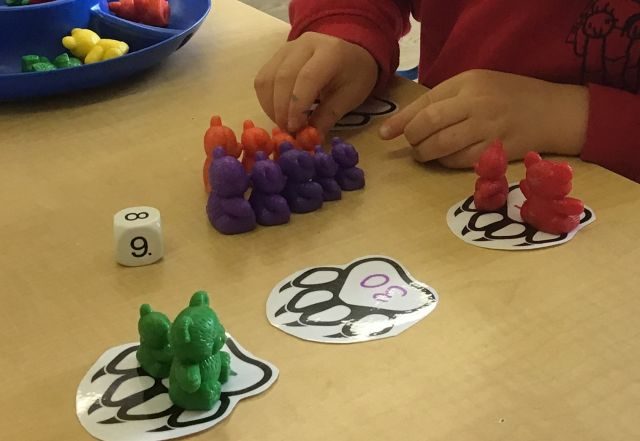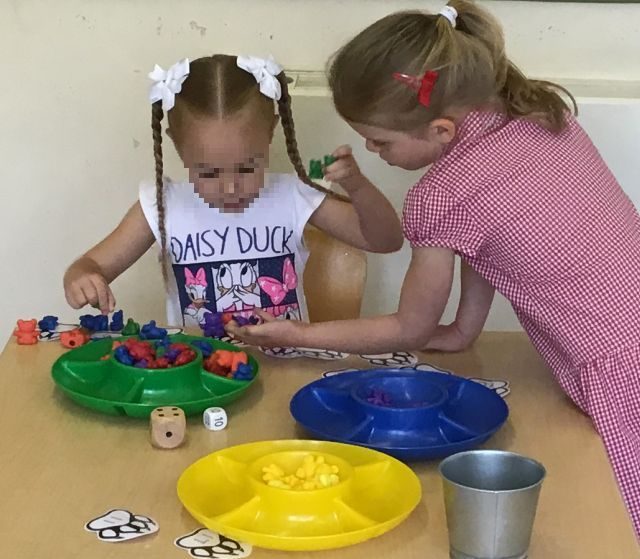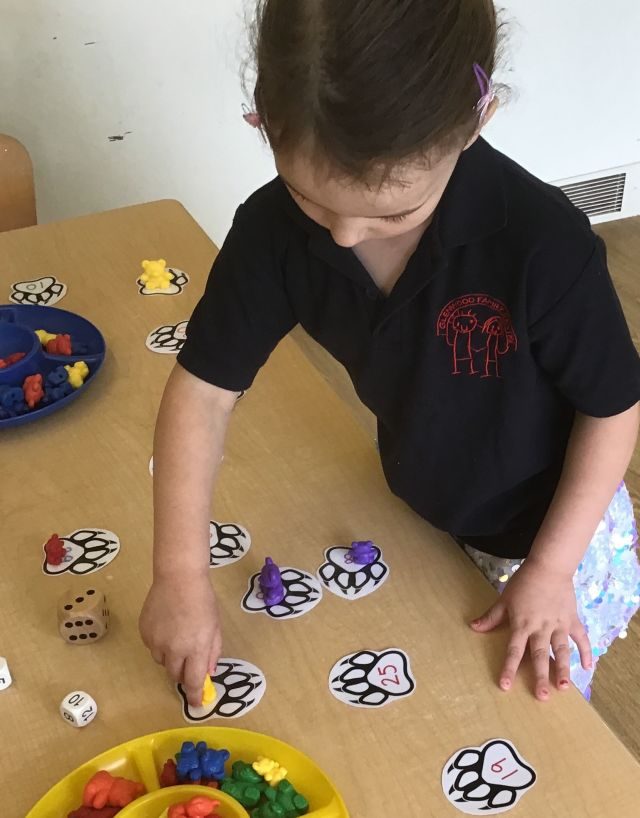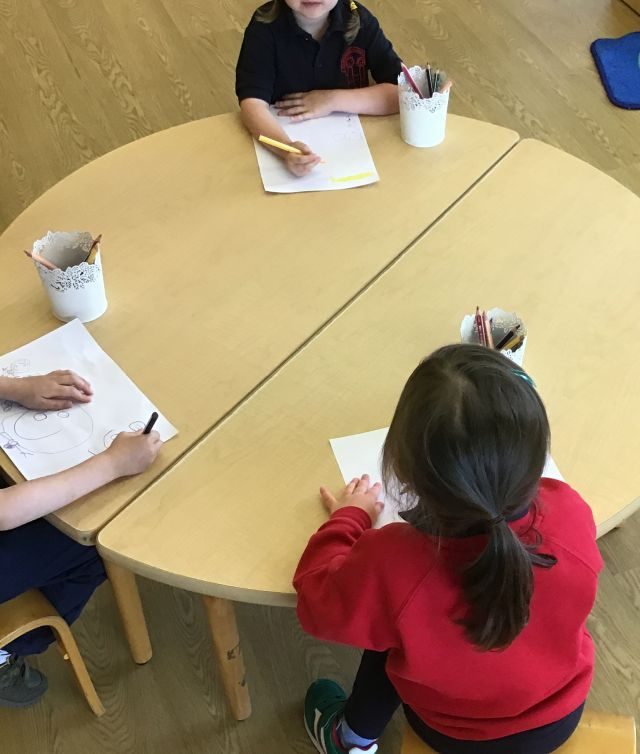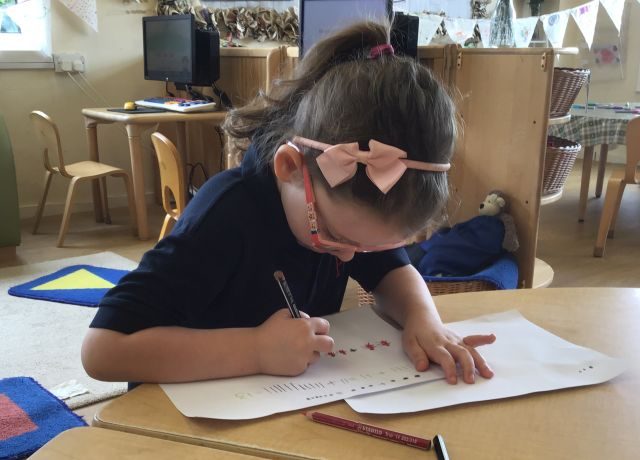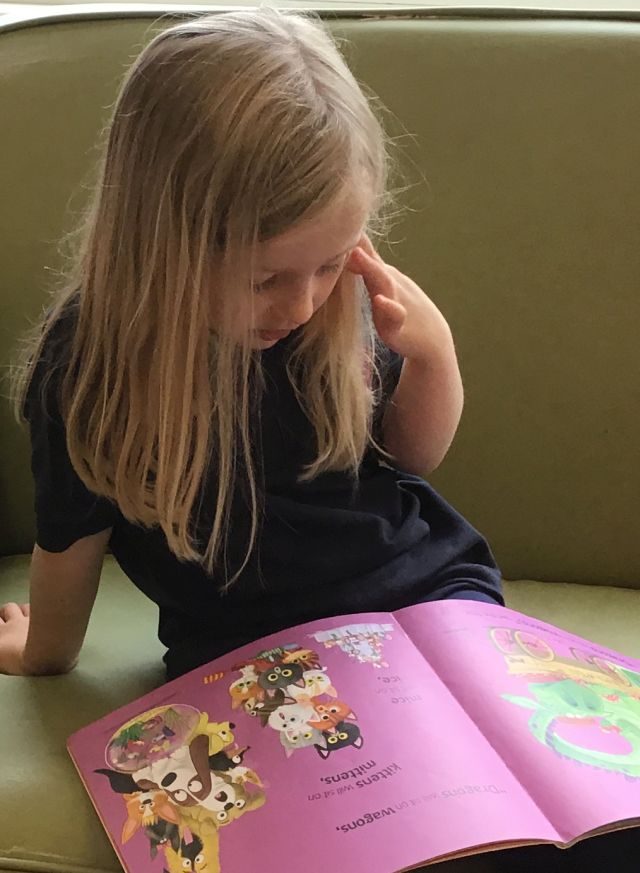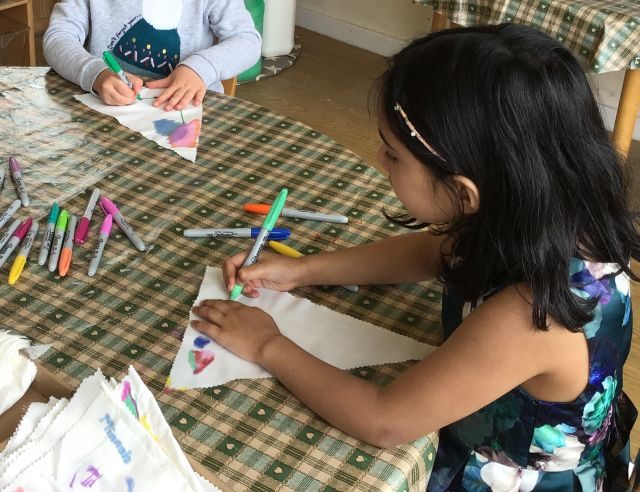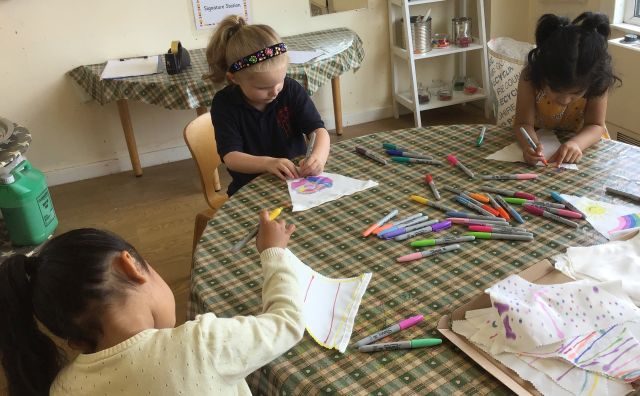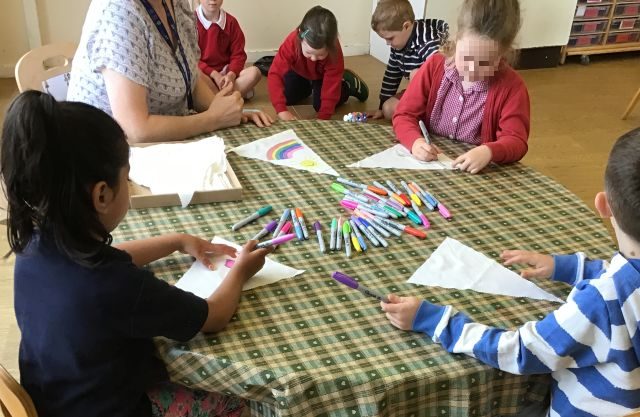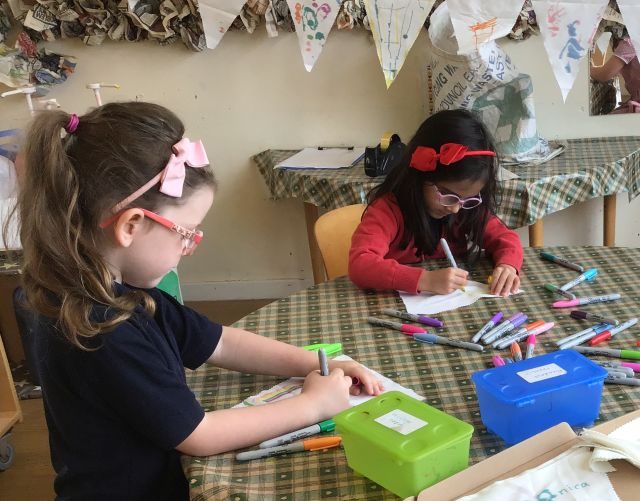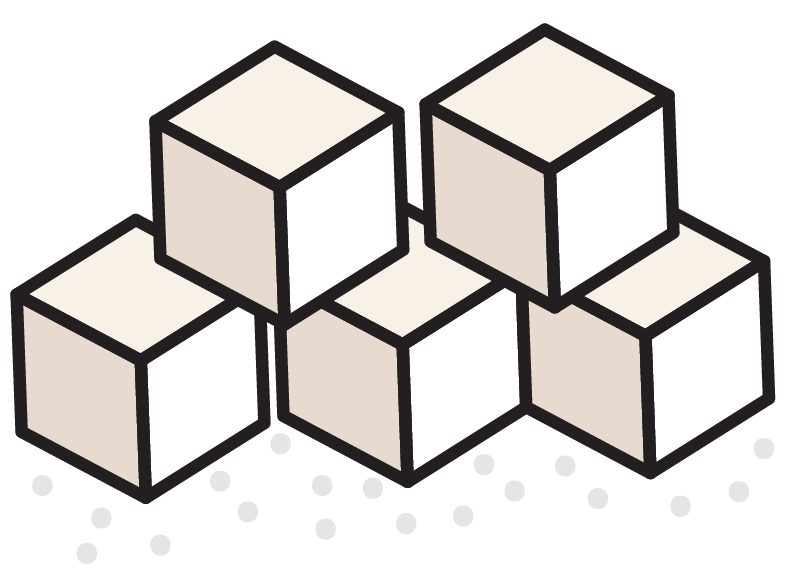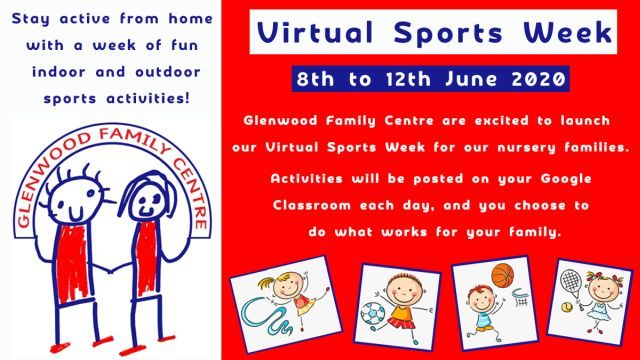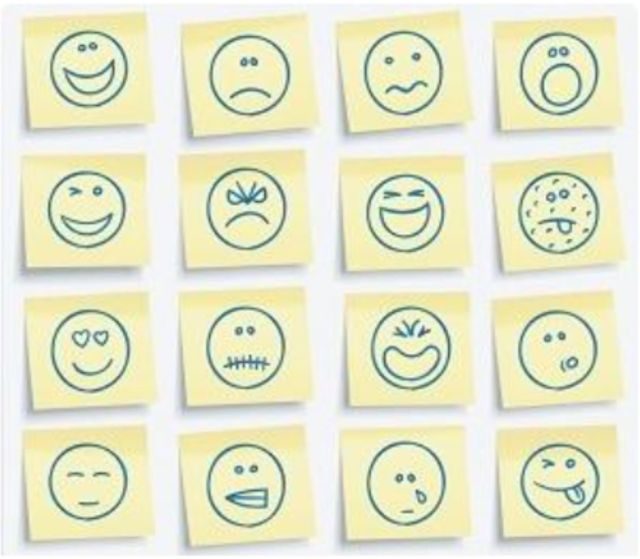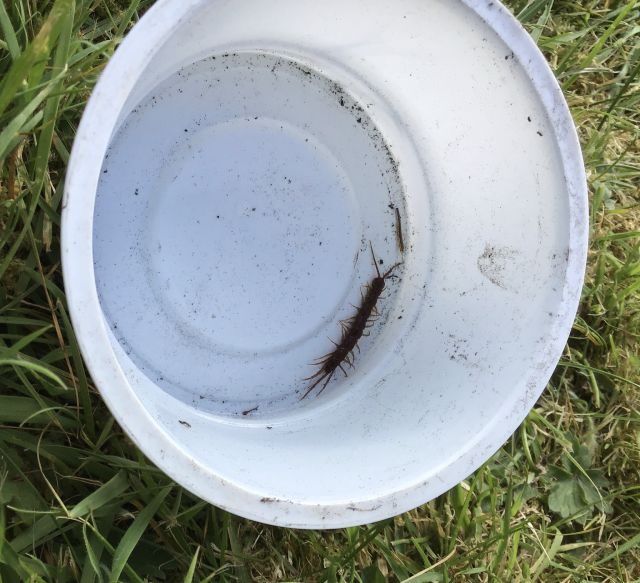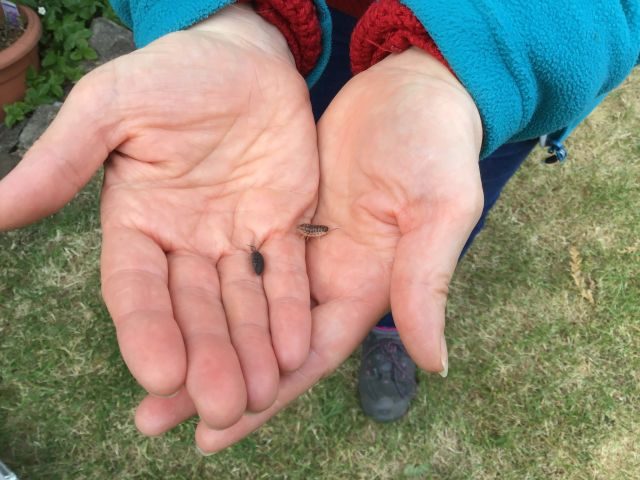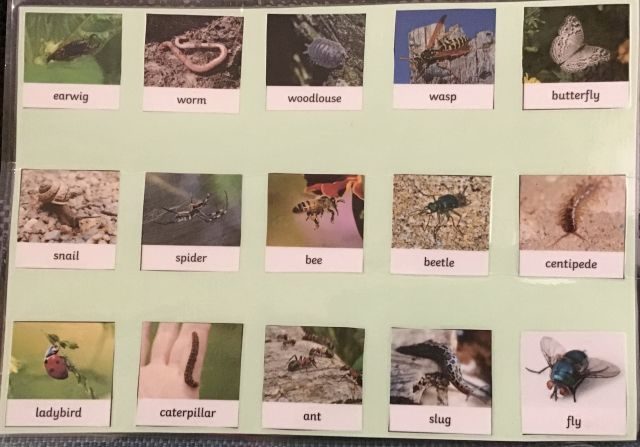Tag Archives: health and wellbeing
Remote Learning: Our New Nursery

Respected Rhiya encourages us to think and talk, and to share our ideas and views.
Rhiya has got some sad news, happy news and she wants to give you a challenge.
The sad news is that we can’t all be at nursery together as we have to make sure everyone is safe from the virus. Also when we come back together, our nursery building might have disappeared. Big machines are going to knock it down.
How does that make you feel?
Some people think that will be exciting and they want to see it all smashed. Some people are worried it will be very noisy and messy. For lots of people the building and garden have lots of happy memories.  The happy news that we are getting a new nursery with lots of lovely new toys inside. It is much bigger, with large playrooms, lots of windows and a little garden in the middle. Everything is new and clean and there will be lots of new things to try and we will see our friends there.
The happy news that we are getting a new nursery with lots of lovely new toys inside. It is much bigger, with large playrooms, lots of windows and a little garden in the middle. Everything is new and clean and there will be lots of new things to try and we will see our friends there.
What do you think? Are you excited, worried or not sure?
The adults are getting things ready in the new nursery – here are a few photos for you to see what it looks like.









Rhiya’s challenges are:
- Can you tell us what you liked best about our old nursery?
- What are you looking forward to at our new nursery?
- Can you draw us a picture or make us a model or write us a story or make a game?
- What should our rules be for our nursery and what is important?
Rhiya hopes you like the challenges and that you will post into Google Classroom.
Completing the challenges will help you use lots of skills – you will be remembering, understanding, applying, analysing, evaluating and creating. These are called higher order thinking skills.
Remote Learning – Our Wellbeing Friends
 2021 has been named ‘Year of Childhood’ and while already full of challenges, let’s look for opportunity and community building. Here are some ways we hope that we can work together this year.
2021 has been named ‘Year of Childhood’ and while already full of challenges, let’s look for opportunity and community building. Here are some ways we hope that we can work together this year. Save the Children have created some fantastic resources to help us work together to do this – including our Wellbeing Buddies.
Save the Children have created some fantastic resources to help us work together to do this – including our Wellbeing Buddies.







Don’t forget to come to Glenwood to collect your learning at home bag.
Please remember to share your learning on Google Classroom or Twitter @GlenwoodFC #Glenwoodlearningathome
Remote Learning: Fresh Air and Exercise
Just because it’s winter and the days are short doesn’t mean going outside is not fun!
In fact, fresh air really is good for you! It can:
- help you feel more energised
- help you sleep better
- help decongest you if you have a cold
- restore your mood
 Here are some ideas of things that you can do with your families outdoors at this time of year…
Here are some ideas of things that you can do with your families outdoors at this time of year…
 Play in the Snow – Why not build a snowman, go sledging or throw some snowballs? Just going for a walk in the snow is exciting – everything looks and sounds different! Can you see different footprints? Who do you think made them? Which way did they go?
Play in the Snow – Why not build a snowman, go sledging or throw some snowballs? Just going for a walk in the snow is exciting – everything looks and sounds different! Can you see different footprints? Who do you think made them? Which way did they go?
 Ice and Frost – Go exploring – look for different patterns of frost and different places to find ice. You might slide on it, smash it or pick it up and look through it.
Ice and Frost – Go exploring – look for different patterns of frost and different places to find ice. You might slide on it, smash it or pick it up and look through it.
Try blowing bubbles when it’s cold – if you are lucky they will freeze.
Have a go at making ice decorations click here to find out how. Go on a Bear Hunt – Use all your senses as you squelch through mud, scrunch over frosty grass and splash through puddles! You might need to climb through branches or scramble up a hill… will you find the bear’s den?
Go on a Bear Hunt – Use all your senses as you squelch through mud, scrunch over frosty grass and splash through puddles! You might need to climb through branches or scramble up a hill… will you find the bear’s den?
Puddle Jumping – It’s always fun to jump and splash in puddles! Who can make the biggest splash? Which puddle is deepest? Can you splash all the water out of the puddle?
Fun with Sticks – You could try a game of Pooh Sticks if you are near a bridge over a stream or take some sticks home and make a Stickman using what you have in your house.
Go exploring with a torch – Why not go for an adventure after dark? Take a torch with you and explore the woods or just have a turn in the play park! You might choose to watch the sun go down while you are out as well.
Have a campfire – Some of you might be lucky enough to be able to have a fire in your garden. Why not try cooking some tasty treats on it, such as foil wrapped bananas or marshmallows?
Remember to wrap up warm – Several thin layers are better than one very thick one – then if you get too warm you can take one off! Adults please remember that children will not feel the cold as much as you do BUT they also may not realise when they get too cold – especially when hands and feet get wet.
Whatever you do outdoors – have fun and please share your adventures on Google Classroom or on Twitter @GlenwoodFC #Glenwoodlearningathome
Happy New Year
All of us at Glenwood hope that you had a good break and wish you all the best for the New Year. We are disappointed that we are not able to welcome you all back to nursery this week but have been busy making plans for the upcoming weeks.
We are disappointed that we are not able to welcome you all back to nursery this week but have been busy making plans for the upcoming weeks.
We will again be providing regular ideas for learning experiences for you to use at home if you wish. This will be both through our website and on Google Classroom. We are also getting another Home Learning Bag put together along with a booklet full of ideas for you to use as a family.
We hope that you will share your learning with us through Google Classroom – by doing this your child can show their friends what they have been doing and also see what their friends have been doing to! We will also add your pictures to your child’s learning journal to show their learning at home.
This is an unsettling time for everyone, so you may like to look back at some of our previous blogs….
Stay safe and we hope to be able to welcome you back to Glenwood soon.
For full details of how we are supporting home learning and the extra measures we have in place to keep safe in Glenwood please visit this page as part of our Coronavirus planning.
https://blogs.glowscotland.org.uk/er/Glenwood/january-2021-remote-learning/
Road Safety with Ziggy
Today we took Ziggy with us on our Woodland Adventure and taught him all about staying safe on the road.

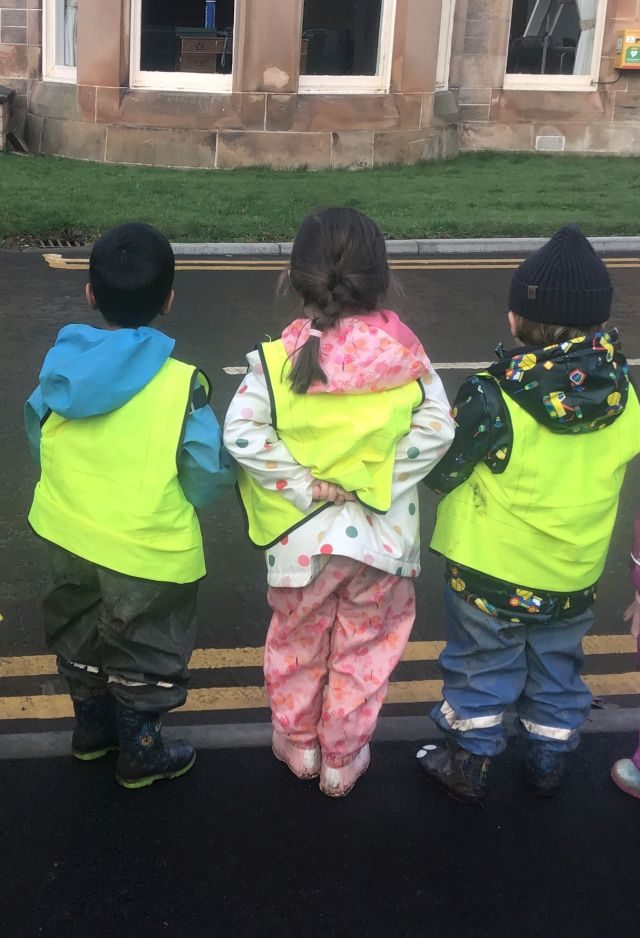

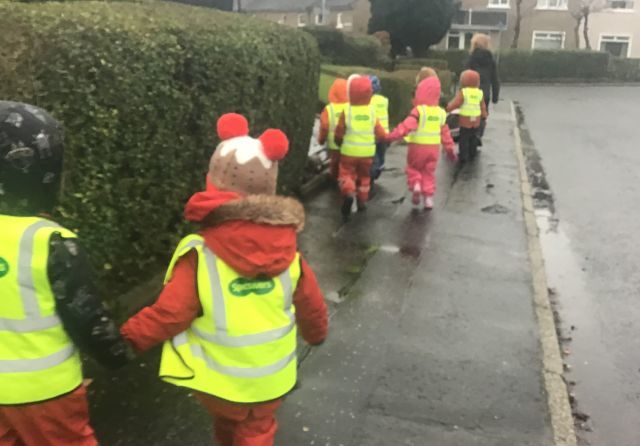
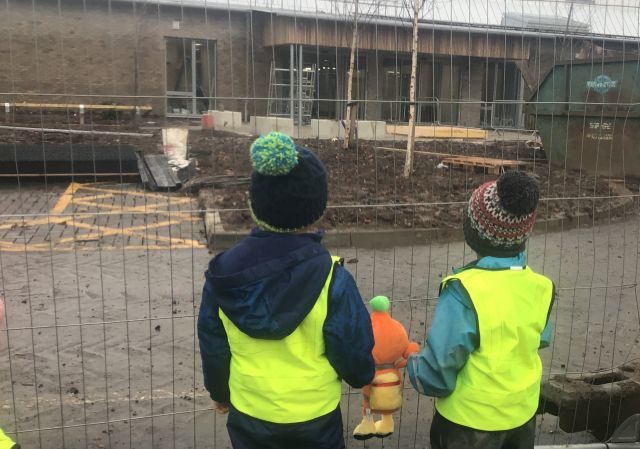
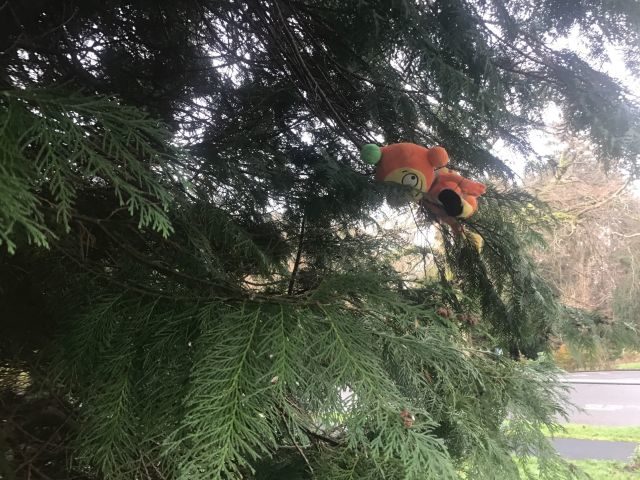
The children are all very good at keeping safe when we walk to the woods and could tell Ziggy all about what he should do.
ECO success
We are delighted to have successfully attained our 6th Eco-Schools Green Flag Award!
This is a brilliant achievement and is the result of sustained hard work and commitment by the Glenwood community.
See our video of evidence below.
Remote Learning – Fun Friends: Don’t Forget to be Brave and Stay Happy!
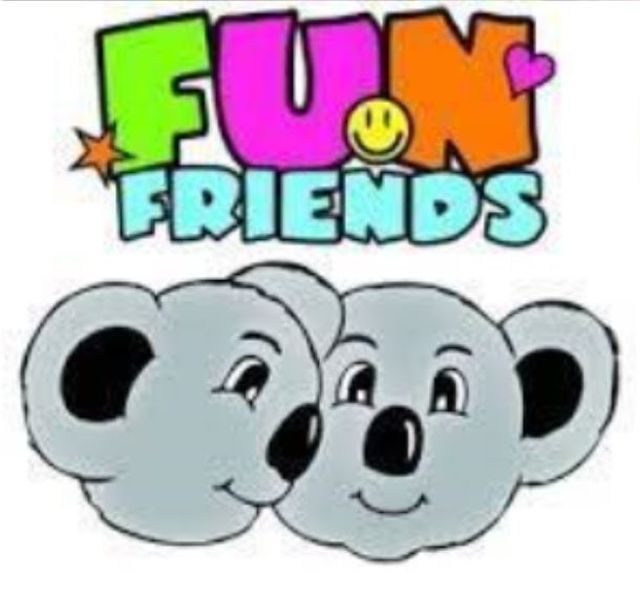 Hello Fun Friends. This is our last message of this year and we want you to carry on being Brave and Happy!
Hello Fun Friends. This is our last message of this year and we want you to carry on being Brave and Happy!
Remember to use your milkshake breathing and relax when you feel upset or worried. Also it can be good to talk about your feelings with people who care for you.
Mirror, Mirror
 When you are looking at yourself in the mirror (perhaps brushing your teeth or hair) Tell yourself something positive e.g “I can be brave, kind, helpful, try my best” These are positive (green) thoughts.
When you are looking at yourself in the mirror (perhaps brushing your teeth or hair) Tell yourself something positive e.g “I can be brave, kind, helpful, try my best” These are positive (green) thoughts.
You can help other people to have green positive thoughts too. Send a message to a friend, member of your family or neighbour.
We know that you are Brave! We saw how Brave you could be at Glenwood and we know you will continue to try and be brave. Remember to keep practising being brave. Brave is :
- Looking people in the eye
- Smiling
- Using a brave voice
- Standing up tall
- Trying your best and giving it a go!
Making New Friends
 It’s good to make new friends and to play with different people. Friends smile, help, talk, listen, play and share. What would you tell your friend? What would you ask them? Would you tell them about your family?
It’s good to make new friends and to play with different people. Friends smile, help, talk, listen, play and share. What would you tell your friend? What would you ask them? Would you tell them about your family?
Family Fun Questions (why not write these out, add some more and then pick a question to answer)
- Who has the loudest laugh?
- Who makes the best food and what is it?
- Who is the funniest person?
- Who has the smelliest shoes?
- Who is the oldest person in the family?
- What is your favourite thing to do?
Our support Team
 Sometimes we need help or care from others. On a piece of paper draw yourself and then people who can help or support you round about you. This might include siblings, wider family, neighbours, teachers (pets can also be included).
Sometimes we need help or care from others. On a piece of paper draw yourself and then people who can help or support you round about you. This might include siblings, wider family, neighbours, teachers (pets can also be included).
Game – What could you do if? (Think of solutions to these problems)
- You don’t get a plate/book but everyone else does.
- There’s a lion in the garden.
- There is a group of children playing and you want to join in.
- Everyone is doing an activity and you don’t know how to do it.
- Your friend gets their head stuck in some railings.
Make up your own scenarios – some things that might happen and some funny.
It’s ok to say No!
Sometimes our friends do or say things we don’t like. Remember it’s ok to say “I don’t like that”. Look the person in the eye and use a brave voice. Next you can get louder and show a cross face. Then use a very loud voice and show your angry face and body (no hitting or kicking). Get help from an adult if you need it.
 We follow the rules so we don’t get lost or hurt. We ask for help when we need it and we remember the Pants rule https://youtu.be/_SzbMEVYiyg
We follow the rules so we don’t get lost or hurt. We ask for help when we need it and we remember the Pants rule https://youtu.be/_SzbMEVYiyg
Game – Today we will be……
Here are a few positive behaviours (add your own), write them on pieces of paper, fold them up, put them in a container and then pick one out each day. Then everyone playing needs to try and be this word.
Determined Flexible Thankful Friendly Creative Funny Surprising Tidy Helpful Co-operative Bendy Strong Gentle Playful Try hard
Keep Learning!
As you grow there are lots of things to learn! Keep practising to achieve your goals and try hard! Remember: ‘No matter how old you are everyday is a learning day’.
We are proud of you!
Being in lockdown has been very hard and we want you to know that we have missed you very much but we are very proud of you staying at home or going to a nursery hub.
We hope you will continue being Fun Friends and will remember:
-
- Friends- can recognise our own and others feelings
- Relaxing and milkshake breathing
- I can do it – turning red thoughts green
- Encouraging – I can achieve a goal
- Nurture – I can be a good friend
- Don’t forget to be brave!
- Stay happy!
Transition Visits to Glenwood
This week we have been excited to welcome our pre-school children back to Glenwood for the first of their transition visits.
It was a bit strange at first but the children soon got over their nerves and were soon joining in with all the different activities. It was hard remembering that we couldn’t be too close together but everyone did very well.
Here are some pictures of the experiences we took part in…
The Beebots went on a Bear Hunt
Building houses for bears
Inventing our own bear maths games
Playing on the computers
Drawing pictures and reading books
Listening to the story of Whiffy Wilson The wolf who didn’t want to go to school
And everyone decorated a triangle to make our own bunting
Next week we will hear all about your adventures when you visited your new schools and also have a small celebration together to say ‘Goodbye’.
Remote Learning – Fun Friends: Nurture
 Consistency is key – the more your child practices, the better they will become at finding ways to work through their own personal challenges.
Consistency is key – the more your child practices, the better they will become at finding ways to work through their own personal challenges.
Recap on previous weeks’ learning:
- Feelings It’s ok to have feelings, everyone has feelings. Learning how to recognise and deal with our feelings is an important skill.
- Relax Practise relaxation every day if you can and encourage your child to use relaxation strategies to calm down if they feel upset/worried/angry.
- I can try We can be BRAVE! By looking someone in the eye, smiling and using a brave voice. We now know that RED thoughts are unhelpful thoughts and GREEN thoughts are helpful thoughts. We can choose to turn our RED thoughts GREEN.
- Encourage Did you encourage your child to try a new skill, develop self-control or overcome a fear? Did your child have the opportunity to practice the skill of being brave as they took on a new challenge?
Nurture
 Learning about role models in our lives and how they can influence how we nurture relationships. Spending time together doing fun activities with adults, peers and siblings help us to role model positive relationships. Our family, friends and adults in our lives can help us be brave and we can help them.
Learning about role models in our lives and how they can influence how we nurture relationships. Spending time together doing fun activities with adults, peers and siblings help us to role model positive relationships. Our family, friends and adults in our lives can help us be brave and we can help them.
 Being a good friend Discuss what makes a good friend – helping, sharing, smiling and listening. Then talk about a time that your child has been a good friend and thank them for sharing the story.
Being a good friend Discuss what makes a good friend – helping, sharing, smiling and listening. Then talk about a time that your child has been a good friend and thank them for sharing the story.
 Making new friends Remind children about doing things one step at a time. Discuss steps to make new friends by, smiling and saying hello, asking them to play with you, share your toys, invite them to play at your garden, etc
Making new friends Remind children about doing things one step at a time. Discuss steps to make new friends by, smiling and saying hello, asking them to play with you, share your toys, invite them to play at your garden, etc
Encourage children to listen to their friends.
Listening game: Play a Simon Says game but with a different action from what is being said. For example, Simon says “touch your nose”, while touching your head. Your child needs to listen and do what you say rather than what you do.
Sharing game: In a small group give each child 5 stickers of the same colour. The aim is to end up with 5 stickers- all different colours. Each child has to ask the other child for a sticker in a brave voice and say please and thank you. Afterward you can discuss the importance of being kind and sharing. What would happen if no one had shared a sticker.
 Magical sound box: Put different objects, such as keys, paper, beans in a bottle, etc., into a covered box, and then manipulate one of the objects asking a child to tell you what he or she heard. You might need to introduce the child to different objects and sounds before playing this game.
Magical sound box: Put different objects, such as keys, paper, beans in a bottle, etc., into a covered box, and then manipulate one of the objects asking a child to tell you what he or she heard. You might need to introduce the child to different objects and sounds before playing this game.
Guess who is calling you: Seat everyone in a circle, choose one child to cover their eyes. Then choose someone else in the group to shout out the person’s name that has their eyes closed. The child then uncovers their eyes and has to guess who shouted out their name. Continue until everyone has had a turn in the circle.
Useful links for being a good friend.
CBeebies Justin’s Good Friends Song
What makes a good friend? song on YouTube
Bad Apple: a tale of friendship by Edward Hemingway (YouTube)
Friendship Soup – a recipe for friends (YouTube)
Can you tell us about when you have been a good friend to your family, neighbours or anyone else?
Share on Google Classrooms or Twitter @GlenwoodFC #Glenwoodlearningathome
Remote Learning – Let’s Smile!
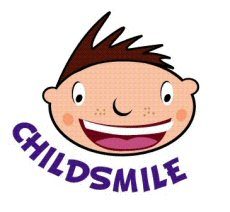 We love to see your smiles and it is nearly the end of National Smile Month (18th May – 18th June). When you smile it’s great to see your teeth especially when they are clean and bright.
We love to see your smiles and it is nearly the end of National Smile Month (18th May – 18th June). When you smile it’s great to see your teeth especially when they are clean and bright.
Remember to:
- Brush your teeth twice a day in the morning and at night.
- Brush for two minutes with a pea sized amount of toothpaste
- At the end spit don’t rinse
- Reduce sugary foods and drinks and restrict them to mealtimes.
Why don’t you sing along with Hey Duggee’s toothbrushing song?
Activity
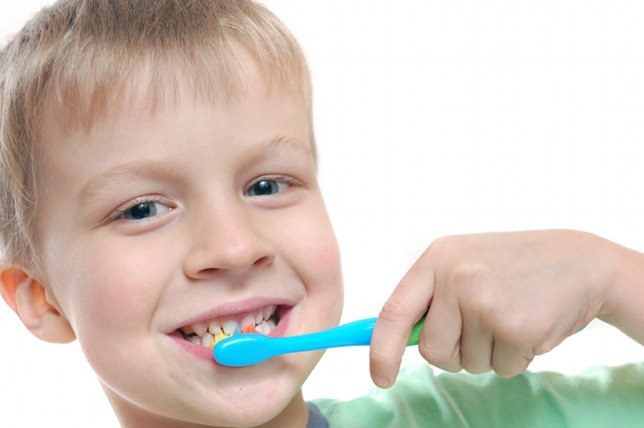 Next time you are brushing your teeth can you name the different parts you are brushing: the lower set, front of your teeth, gums, back of teeth, biting surface, corners and upper set of teeth.
Next time you are brushing your teeth can you name the different parts you are brushing: the lower set, front of your teeth, gums, back of teeth, biting surface, corners and upper set of teeth.
Lots of us also love things that are sweet but sugar isn’t good for our teeth or bodies. Are you eating too much sugar?
https://www.nhs.uk/change4life/food-facts/sugar
Activity – Sugar Bags
Create bags with spoonfuls of sugar to show how much sugar is in a product you enjoy. You will find the amount of sugar in the nutrition panel of the product listed under “Carbohydrate of which sugars”. 1 teaspoon=roughly 4g of sugar so divide the figure on the packaging by 4 to get the number of teaspoons.
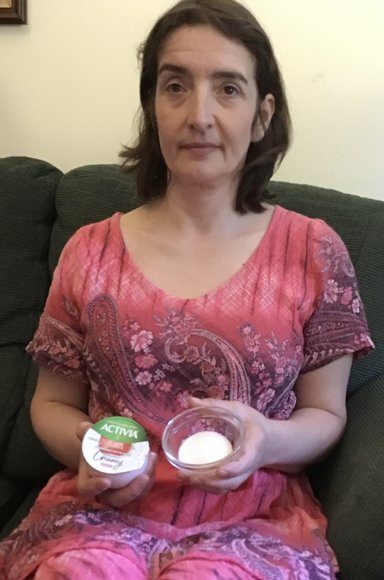 Mrs McGregor checked her yoghurt ingredient panel and found it contained 13.8g of carbohydrate as sugars. She measured out 3 ¼ teaspoons of sugar to show how much sugar was in the yoghurt.
Mrs McGregor checked her yoghurt ingredient panel and found it contained 13.8g of carbohydrate as sugars. She measured out 3 ¼ teaspoons of sugar to show how much sugar was in the yoghurt.
Sugar swap
Which items do you enjoy that you could swap for similar products with less sugar? For example, you could swap flavoured yoghurt for natural yoghurt with fresh fruit . 
https://www.nhs.uk/change4life/food-facts/sugar/sugar-swaps-for-kids
You can find out more about Child Smile on their website:
http://www.child-smile.org.uk/parents-and-carers/index.aspx
We would love to see your smiles and healthy swaps – why don’t you post them in your Google Classroom to show your friends?
@GlenwoodFC #Glenwoodlearningathome
Remote Learning – Virtual Sports Week
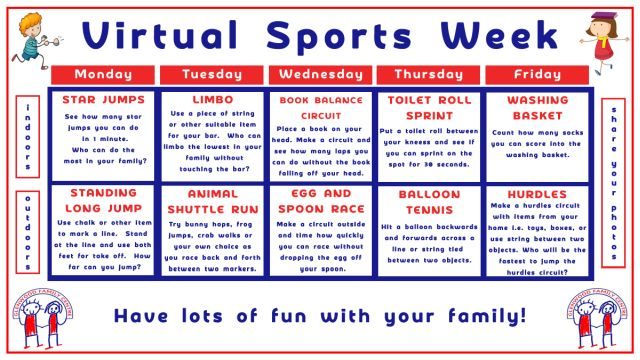 We have all had lots of fun this week joining in with our sporting activities and we hope you have too!
We have all had lots of fun this week joining in with our sporting activities and we hope you have too!
Thank you for posting all your videos on Google Classrooms – we have enjoyed watching you all.
Here are some pictures from the week…apologies if they are a bit blurry but the adults from Glenwood move very fast!
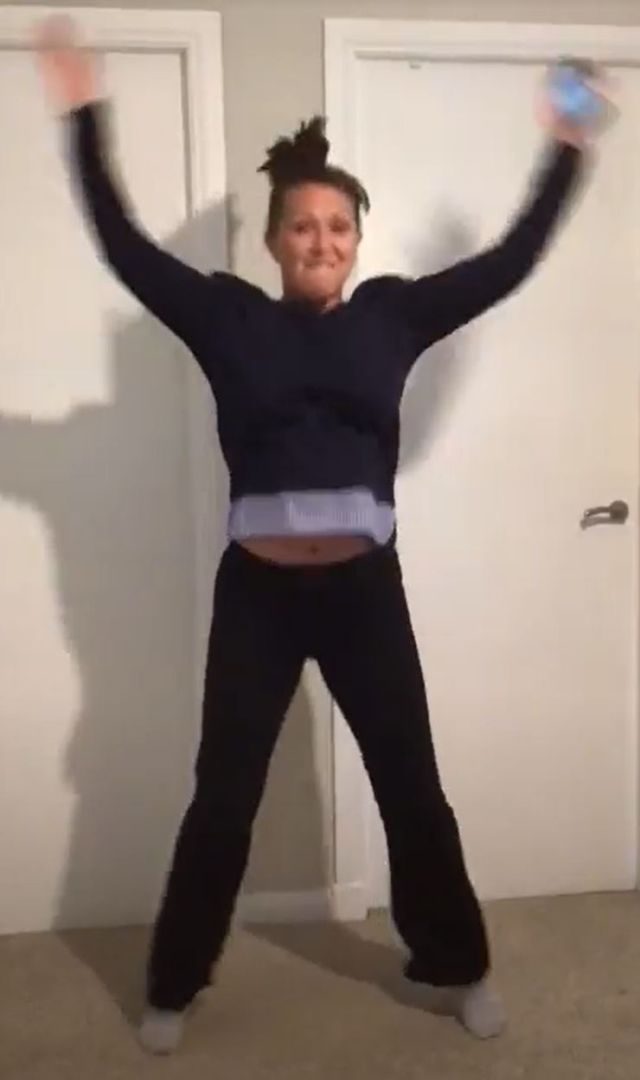
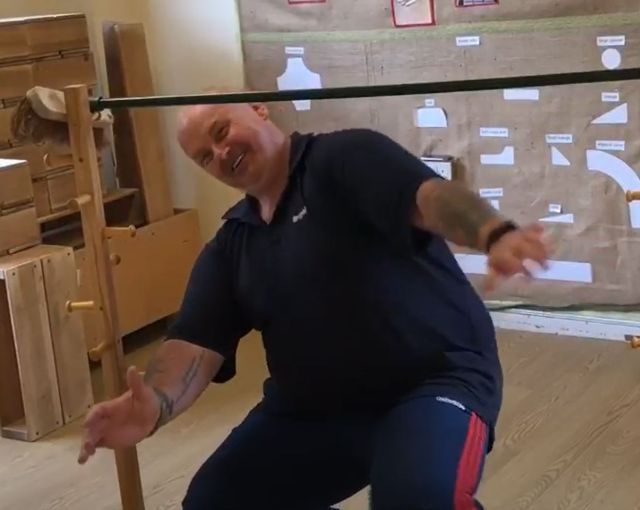

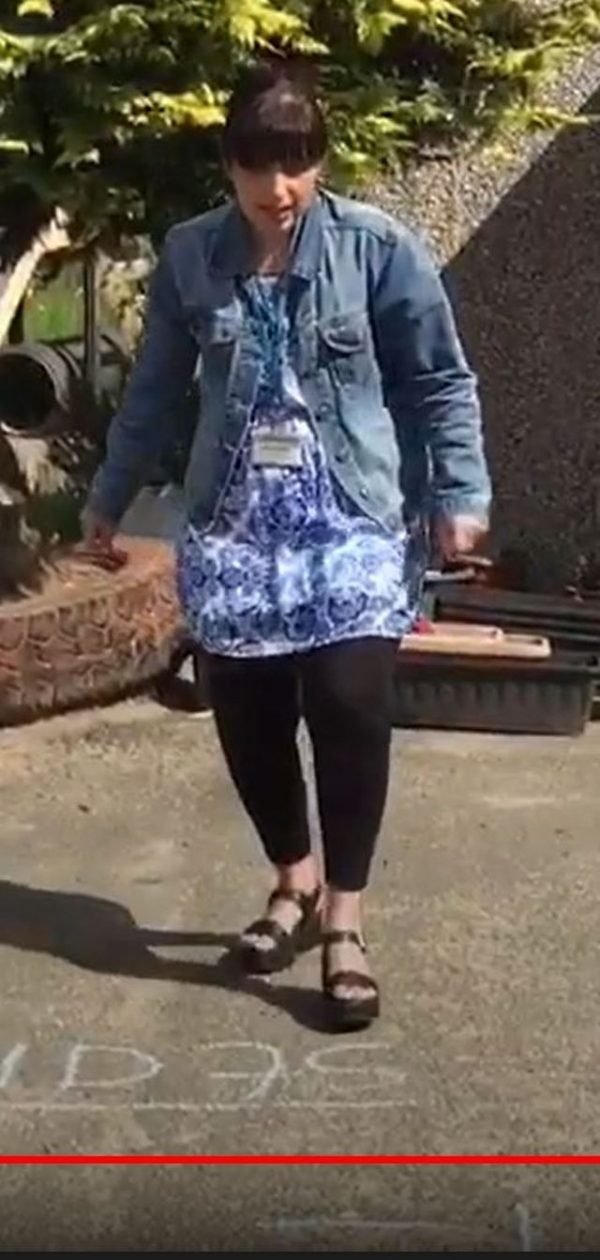
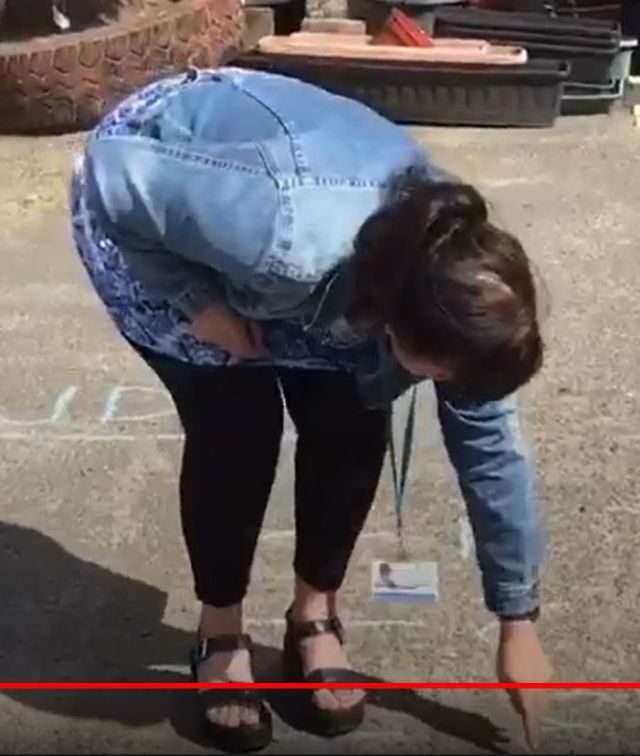
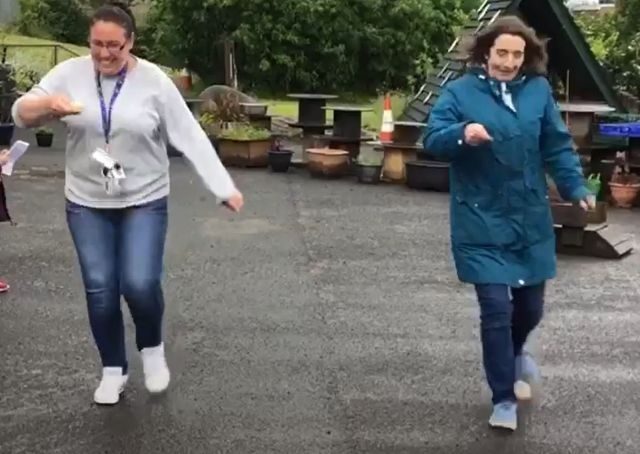
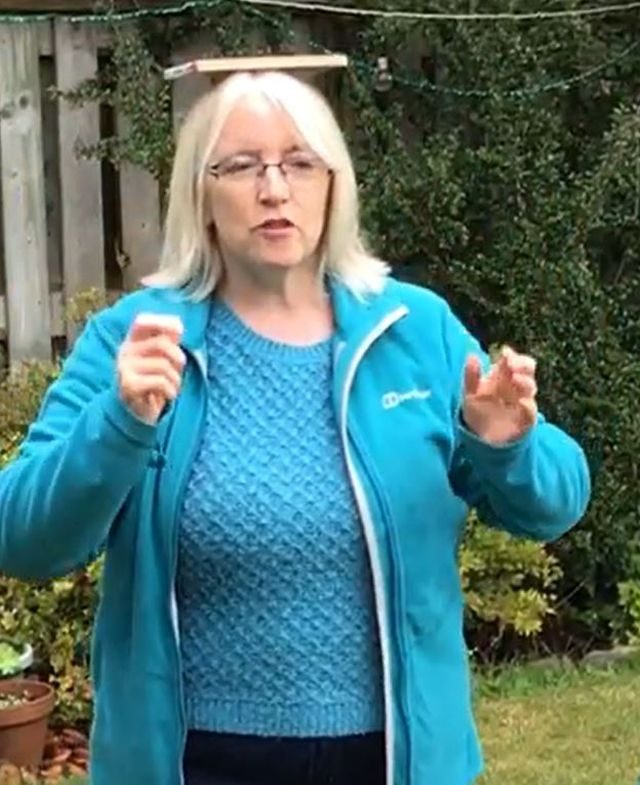
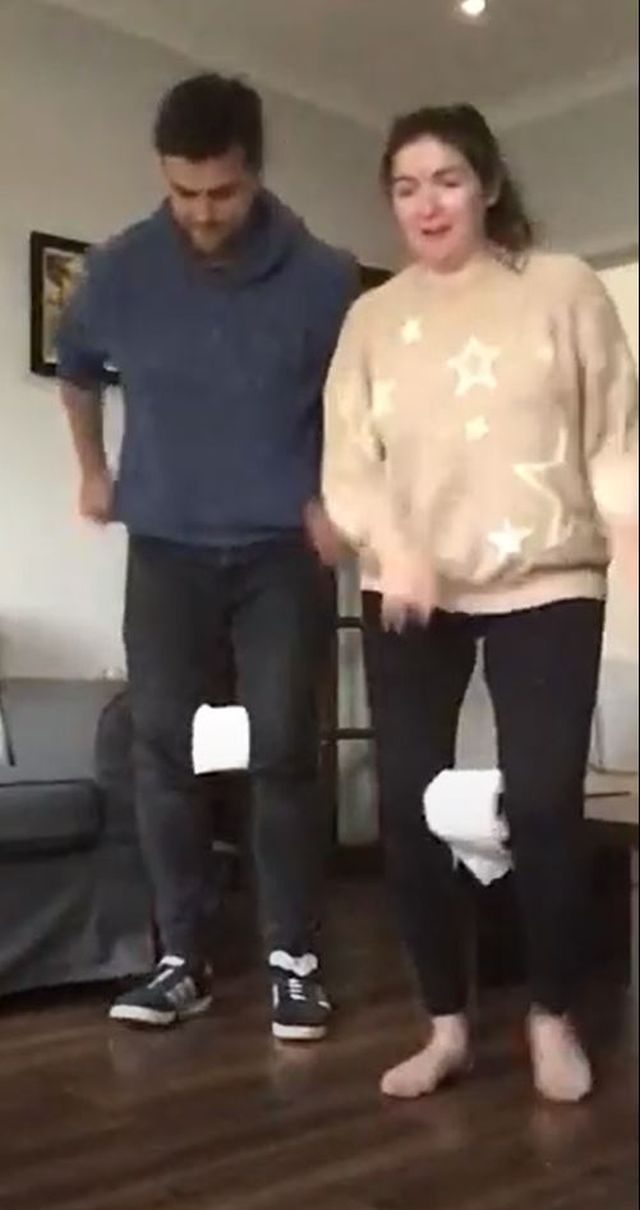

Remote Learning – Fun Friends: Encourage
This week we are looking at encouragement.
Well done to all of you who have been learning about feelings, relaxing (and milkshake breathing) and ‘I can do it!’ (turning red thoughts green).
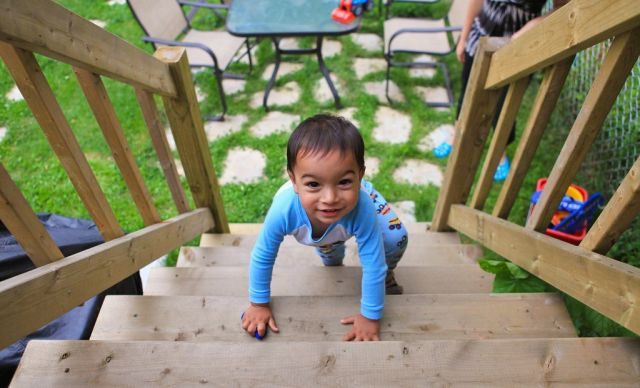 This week we want to set goals with children, and encourage them to gain a skill, develop self-control or overcome a fear. This is a chance for us to be brave as we take on a challenge!
This week we want to set goals with children, and encourage them to gain a skill, develop self-control or overcome a fear. This is a chance for us to be brave as we take on a challenge!
To achieve our goal we can break the task into smaller steps. An example is learning to complete a jigsaw puzzle:
- Find the four corner pieces
- Find the pieces with a straight edge
- Match up the pieces with a straight edge
- Match up pieces with the same colour and join together
- Fill in the gaps with remaining pieces.
- Jigsaw complete
Can you pick a goal you would like to achieve? What will you pick?
If you can’t think of a goal here are some ideas:
- Getting dressed by yourself
- Sleeping in your own bed
- Learning a new sport (for sports week)
- Eating new food especially fruit or vegetables
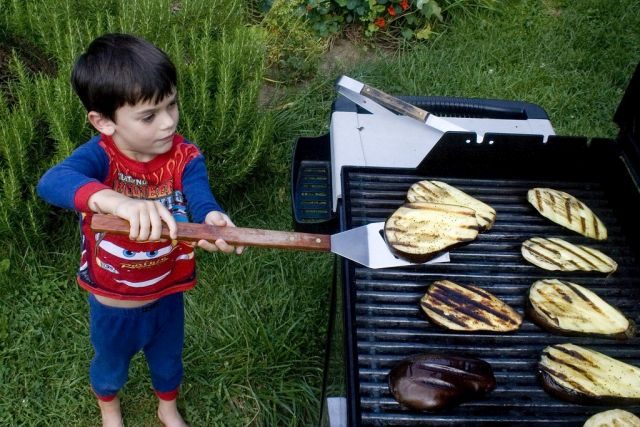
- Fastenings- zips, buttons, studs or velcro
- Riding bike or scooter
- Finding and tidying up your belongings
- Being brave when ……….
Can you make a picture to show what you want to learn or get an adult to help write a list of steps to get you to your goal. If you want you could post it on your Google classroom.
Now start at step one and try and achieve it. If it takes practise try hard! Remember to think green thoughts. When you have achieved a step, Celebrate! Give yourself a cheer or do a little dance. When you achieve your goal maybe you will get a reward.
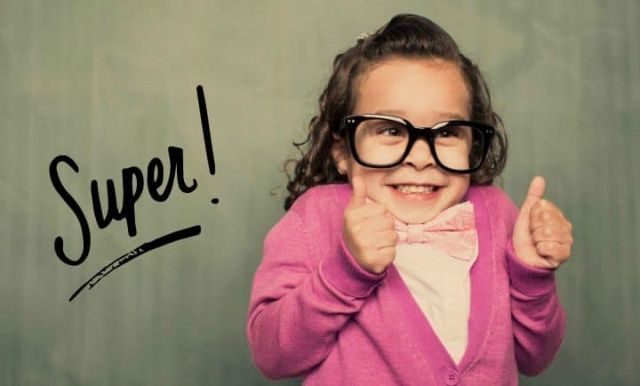 What reward would you pick? Maybe playing a favourite game as a family, or getting to choose what Mum or Dad will cook. Fun Friends Koala likes choosing activities with others more than sweet or toy rewards. Can you do the same?
What reward would you pick? Maybe playing a favourite game as a family, or getting to choose what Mum or Dad will cook. Fun Friends Koala likes choosing activities with others more than sweet or toy rewards. Can you do the same?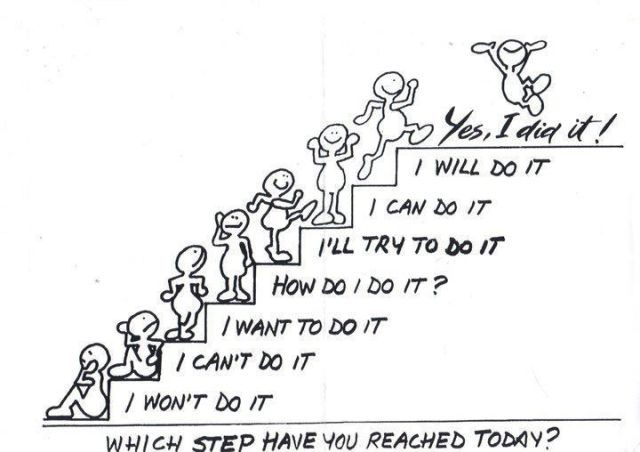 Additional resources
Additional resources
CBeebies radio programme on encouragement: https://www.bbc.co.uk/cbeebies/radio/treasure-champs-encouragement
Using zips: https://www.nhsggc.org.uk/kids/resources/ot-activityinformation-sheets/zips/
Learning to button: https://theinspiredtreehouse.com/teach-kids-button/
Introducing new food (its part of info on fussy eaters): https://www.nhsggc.org.uk/kids/resources/ot-activityinformation-sheets/fussy-eaters-information-sheet/
Staying in your bed: https://raisingchildren.net.au/toddlers/sleep/night-time-problems/calling-out-getting-out-of-bed
Learning to ride a bike: https://blog.halfords.com/how-to-teach-a-child-to-ride-a-bike/
Remote Learning – Glenwood Virtual Sports Week
All of the staff are super excited about our Virtual Sports Week and have been out practising! Take a look at the video…
Each day next week we will post on Google Classrooms different sports for you to try at home. Take some photos or videos of you taking part and post them in your Google Classroom for your Glenwood friends to see.
You can also share on Twitter @GlenwoodFC #Glenwoodlearningathome
Remote Learning – Fun Friends: I can do it!
- It’s ok to have feelings
- Everyone has feelings
- I can recognise feelings in myself and others
- I can ask for help with my feelings
- Hitting, kicking or breaking things is not ok, no matter how we feel
Keep encouraging your child to identify feelings in themselves and to do things that make themselves feel better when they are experiencing unpleasant feelings.
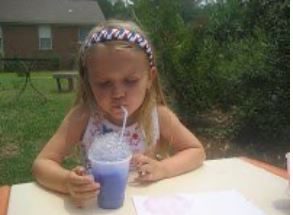 Practise relaxation every day if you can and encourage your child to use relaxation strategies to calm down if they feel upset/worried/angry e.g use milkshake breathing and imagine a peaceful place.
Practise relaxation every day if you can and encourage your child to use relaxation strategies to calm down if they feel upset/worried/angry e.g use milkshake breathing and imagine a peaceful place.
We can be BRAVE! Being BRAVE is:
- Looking people in the eye
- Smiling
- Using a brave voice
- Standing up tall
- Trying your best
- Trying something for the first time
Red and Green thoughts:
 This week in the Fun Friends programme we teach children about negative (RED) thoughts and positive (GREEN) thoughts. There are some activity ideas further down the post.
This week in the Fun Friends programme we teach children about negative (RED) thoughts and positive (GREEN) thoughts. There are some activity ideas further down the post.
What children think has an impact on their feelings and actions so it is important we help children develop positive mindsets and be more confident.
What we want children to learn is we can have RED (unhelpful) thoughts or GREEN (helpful) thoughts. We can choose to turn our RED thoughts GREEN.
 GREEN thoughts are the things you say to yourself in your head that make you feel good which makes them HELPFUL thoughts.
GREEN thoughts are the things you say to yourself in your head that make you feel good which makes them HELPFUL thoughts.
- I can do it! I will give it a go
- I will try my best
- I am brave
- I will help Mum/Dad/Brother/Sister
- I’m good at lots of things
- It doesn’t matter if I make a mistake
- I have lots of friends
- I’m going to have a good day. I am looking forward to it
- I’ll ignore people who say nasty things to me
- I’ll try this game because it will be fun
- Mum/Dad/Gran/Grandpa always pick me up at the end of the day – they won’t forget
 RED thoughts are things you say to yourself that make you feel unhappy feelings or make you feel less confident which makes them UNHELPFUL thoughts.
RED thoughts are things you say to yourself that make you feel unhappy feelings or make you feel less confident which makes them UNHELPFUL thoughts.
- I can’t do it and/or I can’t do it without Mum/Dad
- I don’t want to go because I won’t have fun
- No one likes me
- I got something wrong so I’m silly
- I’m not good at this
- I have to win
- I don’t want to do something new – its too scary!
- Reading is too hard
- I’ll look silly if I do that, people will laugh at me
- I’m going to have a bad day
- Mum/Dad/Gran/Grandpa will forget to pick me up at the end of the day!
Changing RED to GREEN
How can we change RED thoughts into GREEN thoughts? Help the children come up with GREEN thoughts for certain situations e.g
- Someone being mean – its not my fault I’m still happy
- Feeling sick – I’ll feel better soon, I can cuddle with Mum/Dad
- Can’t find a toy – I’ll keep looking, I can play with something else
- Best friend didn’t come to school – I can play with someone else, I can still have fun
Feelings vs Thoughts
Talk about the difference between our thoughts and feelings. Talk about how feelings are in our bodies, and thoughts are in our head.
Activity 1
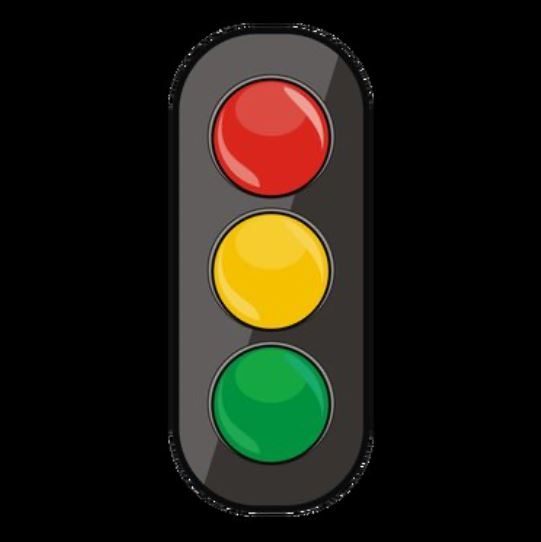 Draw a big traffic light on paper/cardboard with emphasis on RED and GREEN lights – GREEN light means GO!, RED light means STOP! Explain that this is to help us tell the difference between thoughts that help us feel BRAVE and good inside (GREEN) and thoughts that make us feel scared, worried or angry inside (RED). The AMBER light can be seen as a time for changing RED thoughts to GREEN thoughts. It may help to draw happy and unhappy faces onto the traffic lights. Please make sure it is known that RED thoughts are ok to have. You can use examples of RED and GREEN thoughts from the lists above.
Draw a big traffic light on paper/cardboard with emphasis on RED and GREEN lights – GREEN light means GO!, RED light means STOP! Explain that this is to help us tell the difference between thoughts that help us feel BRAVE and good inside (GREEN) and thoughts that make us feel scared, worried or angry inside (RED). The AMBER light can be seen as a time for changing RED thoughts to GREEN thoughts. It may help to draw happy and unhappy faces onto the traffic lights. Please make sure it is known that RED thoughts are ok to have. You can use examples of RED and GREEN thoughts from the lists above.
Activity 2
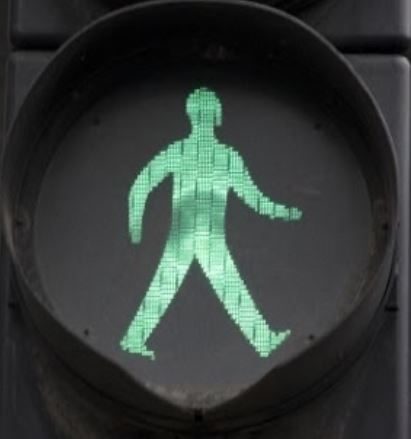 Say ‘Hello’ to GREEN thoughts – talk about times when we might have a RED thought and how we can help ourselves to feel better by turning it into a GREEN thought instead. Write/draw GREEN thoughts on a sheet of green paper (or use a green pen) and turn them into a GREEN thoughts book.
Say ‘Hello’ to GREEN thoughts – talk about times when we might have a RED thought and how we can help ourselves to feel better by turning it into a GREEN thought instead. Write/draw GREEN thoughts on a sheet of green paper (or use a green pen) and turn them into a GREEN thoughts book.
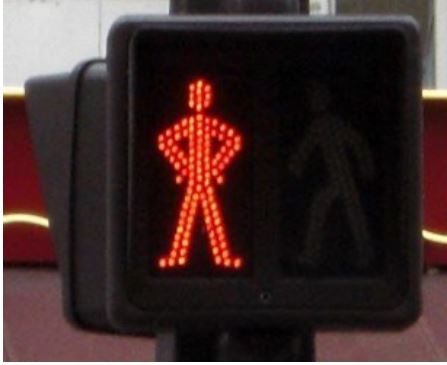 Say Goodbye to RED thoughts – Write/draw a RED thought on a sheet of red paper (or use a red pen), jump up and down on the RED thought, rip it up and throw it in the recycling bin!
Say Goodbye to RED thoughts – Write/draw a RED thought on a sheet of red paper (or use a red pen), jump up and down on the RED thought, rip it up and throw it in the recycling bin!
Practise identifying RED and GREEN thoughts as much as possible. Model turning RED thoughts into GREEN ones and help your child to do the same with their own RED thoughts.
Praise your child for using these strategies in times of stress and for being BRAVE.
Helpful Links for explaining feelings
https://www.youtube.com/watch?v=akTRWJZMks0
Songs
Stories
Healthier Minds
Remote Learning – Let’s Talk About Food
The reason we like some food and not others is because of our taste buds. Can you find out where they are? What foods do your Taste buds love and which ones make them go Yuck! Can you draw a picture of your favourite meal?
Food explorers
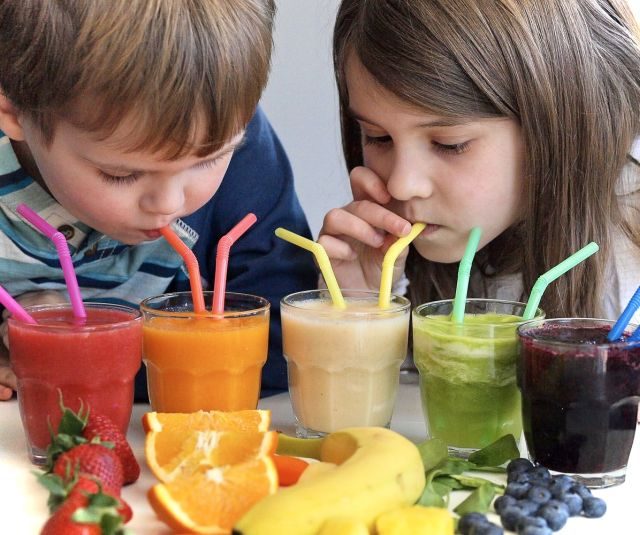 Sometimes we decide we don’t like food because of its look, smell or because we tried it before and we didn’t like it. Remember food can taste different depending on the time of year (especially fruit and vegetables), how it was made and what ingredients were used. Two people can make the same food and it taste different. Can you be a food explorer and explore some new or unusual food? Be Brave and try a very small amount. If you don’t like it that’s ok but don’t be afraid to try it again as our tastes change over time.
Sometimes we decide we don’t like food because of its look, smell or because we tried it before and we didn’t like it. Remember food can taste different depending on the time of year (especially fruit and vegetables), how it was made and what ingredients were used. Two people can make the same food and it taste different. Can you be a food explorer and explore some new or unusual food? Be Brave and try a very small amount. If you don’t like it that’s ok but don’t be afraid to try it again as our tastes change over time.
At the table
Setting a table and putting out everything you need, sitting at the table to eat and deciding what are the rules are good skills to have. There are different rules at different tables. In some countries it’s even polite to burp after a meal to show you enjoyed it. At Glenwood we have developed our mealtimes to encourage conversation as for it to be a relaxing time when children and adults are together. We also know that some of you are enjoying food that you have been helping cook.
Packaging Practise
 Packaging can be a challenge to get into so try and practise opening as many food packages as you can. You might need a little help but this will develop your hand eye coordination, finger control and self confidence as you learn to open up food or drink containers for yourself. Remember to try and keep it steady so it doesn’t fly everywhere.
Packaging can be a challenge to get into so try and practise opening as many food packages as you can. You might need a little help but this will develop your hand eye coordination, finger control and self confidence as you learn to open up food or drink containers for yourself. Remember to try and keep it steady so it doesn’t fly everywhere.
What I like and how much
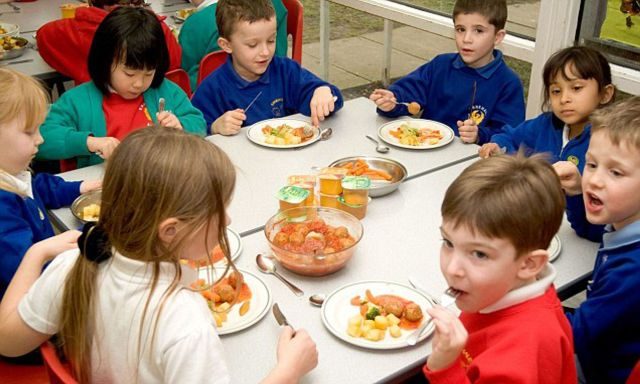 It’s good to learn the names of the food you like and how much you like to eat. Some children have big appetites and some smaller. If you start with an empty plate you could play ‘school dinners’ where you have to ask each item of food that has been made and say how much you want. This will help you develop your vocabulary and your awareness of amount. “more”, “less” “the middle sized one”. And remember to say ‘please’ and thanks you’ to those who have cooked and are serving.Maybe you could have a go at being the school cook and making some food.
It’s good to learn the names of the food you like and how much you like to eat. Some children have big appetites and some smaller. If you start with an empty plate you could play ‘school dinners’ where you have to ask each item of food that has been made and say how much you want. This will help you develop your vocabulary and your awareness of amount. “more”, “less” “the middle sized one”. And remember to say ‘please’ and thanks you’ to those who have cooked and are serving.Maybe you could have a go at being the school cook and making some food.
I’m Full
In the school dinners game you don’t need to eat everything on your plate if you have a big portion. Instead be aware of your body and when it’s full and doesn’t want anymore or if you would like more you could ask if there is any food left you could have.
Steady as you go
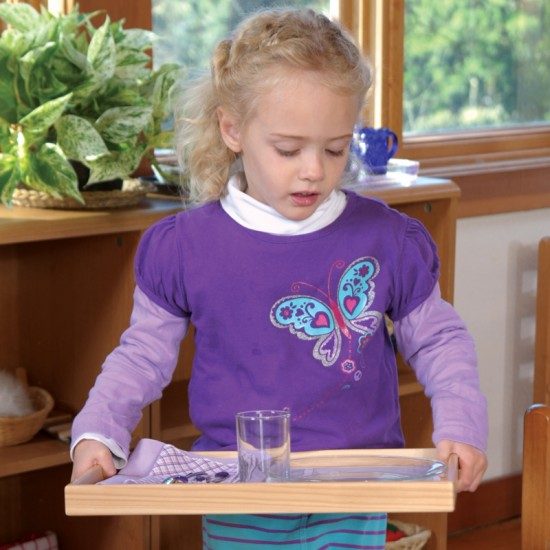 Part of the ‘school dinner game’ can be to carry your plate, cutlery and drink. This is very tricky and could end in a big crash so start by carrying an empty plastic cup, plate and cutlery on a tray. This game requires balance and spatial awareness.
Part of the ‘school dinner game’ can be to carry your plate, cutlery and drink. This is very tricky and could end in a big crash so start by carrying an empty plastic cup, plate and cutlery on a tray. This game requires balance and spatial awareness.
Clean up Time
 When you have finished your food it’s time to tidy up. In the school dinners game you need to scrape your food into a bin. put your cutlery in one container and your cup and plate in another container. This is a good time to see if you made a good estimate of how much you would eat and drink. This is developing independence and self help skills.
When you have finished your food it’s time to tidy up. In the school dinners game you need to scrape your food into a bin. put your cutlery in one container and your cup and plate in another container. This is a good time to see if you made a good estimate of how much you would eat and drink. This is developing independence and self help skills.
Get in touch
We love hearing how you are getting on so keep in touch.
@GlenwoodFC #Glenwoodlearningathome
Remote Learning – Fun Friends Relax…
- It’s ok to have feelings
- Everyone has feelings
- I can recognise feelings in myself and others.
- I can ask for help with my feelings.
- Hitting, kicking or breaking things is not ok, no matter how we feel. Keep encouraging your child to identify feelings in themselves and to do things that make themselves feel better when they are experiencing unpleasant feelings.
Relax
It’s not easy to relax and there are many different ways people choose to relax. Yoga, reading, singing, exercise, meditating, listening to music and much more. In the world today it is important that we help our children develop this skill of RELAXING as the world around them becomes busier with more challenges. When we help our children and ourselves to develop this skill of RELAXING will in turn help with resilience, self control, good mental health and well being. How many times have you heard an adult say “I don’t have time to relax” but we need to make time and show children how to nurture this positive life skill.
BREATHING
 Milkshake breathing is a term we use a lot with the children in Glenwood and it is one of the tools used in the Fun Friends program. In your family fun bags you should have a straw. Use the straw without any water and get them to practise breathing in through their nose and out through the straw big, long slow breaths. Tell them this will help them to blow out their worries so they can begin to feel more relaxed. After a few practises put the straw into a glass of water to practise their milkshake breathing. Try to emphasize how important it is to do this very slowly and gently. The slower we breathe the better. Slow breathing calms us down!
Milkshake breathing is a term we use a lot with the children in Glenwood and it is one of the tools used in the Fun Friends program. In your family fun bags you should have a straw. Use the straw without any water and get them to practise breathing in through their nose and out through the straw big, long slow breaths. Tell them this will help them to blow out their worries so they can begin to feel more relaxed. After a few practises put the straw into a glass of water to practise their milkshake breathing. Try to emphasize how important it is to do this very slowly and gently. The slower we breathe the better. Slow breathing calms us down!
 Belly breathing Find a warm quiet place and lay down. Encourage your child to close their eyes. Ask them to lay one hand on their tummy and start to breathe in through the nose and out through the mouth. As they breathe in ask them if they can feel their tummy moving up and when they breathe out feel their tummy going down. Tell them that this will help them to blow out their worries so they can begin to feel more relaxed. Again try to emphasise how important it is to do this very slowly and gently. Slow breathing calms us down! Do this for 10 minutes everyday or week. Whatever suits your family life.
Belly breathing Find a warm quiet place and lay down. Encourage your child to close their eyes. Ask them to lay one hand on their tummy and start to breathe in through the nose and out through the mouth. As they breathe in ask them if they can feel their tummy moving up and when they breathe out feel their tummy going down. Tell them that this will help them to blow out their worries so they can begin to feel more relaxed. Again try to emphasise how important it is to do this very slowly and gently. Slow breathing calms us down! Do this for 10 minutes everyday or week. Whatever suits your family life.
The more often either one of these strategies is practised the more natural it will become for them to use in a challenging situation. By saying “I can see and hear you are feeling angry, could we try and do some Milkshake breathing?” you are acknowledging their feelings (that they are allowed to have) and also offering a positive way to release them.
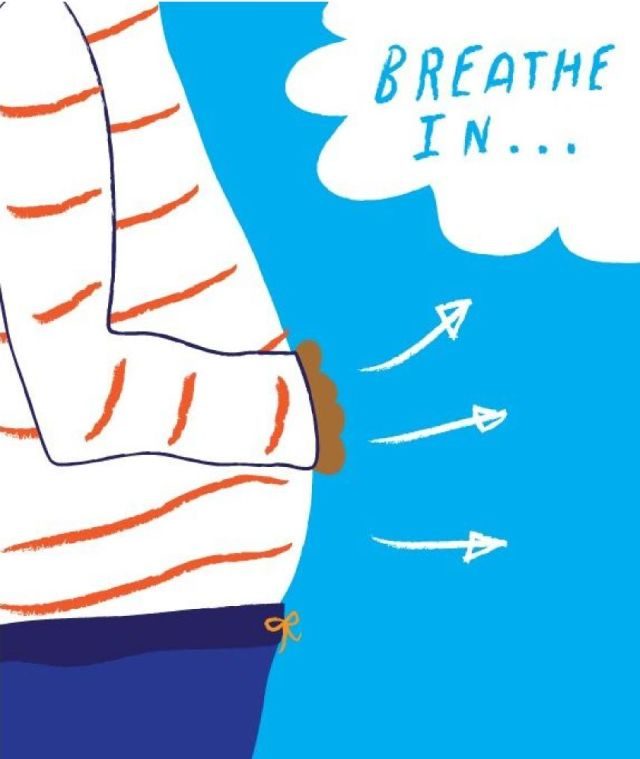 When you’re feeling confident that your child is aware of their breathing and has mastered the skill, music could be introduced and essential oils like lavender. Perhaps as time progresses and the child gets older sessions could last 15mins and even allow them the space to do it themselves in a safe environment.
When you’re feeling confident that your child is aware of their breathing and has mastered the skill, music could be introduced and essential oils like lavender. Perhaps as time progresses and the child gets older sessions could last 15mins and even allow them the space to do it themselves in a safe environment.
These suggested strategies can be done in pairs or as a family. Only you know how your family works best. In Glenwood these sessions are done in small groups with key workers scaffolding learning.
Understanding Body Clues Help children identify “Body Clues” with the “Body Clue Match Game”. Draw around your child to create a body shape. It doesn’t matter what it looks like as long as your child can identify a head and arms and legs. Using the body shape with body clues (ie butterflies in tummy, jumpy heart bear, stamping giant head) talk about the body signs and how this person might be feeling. 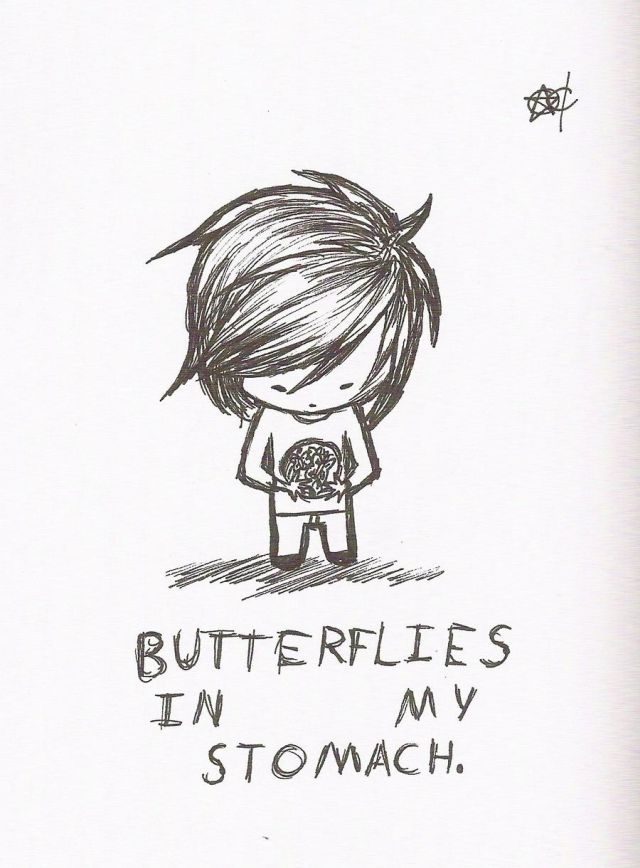
Next, have your child pick out what emotion they want to talk about first. Remember, “good” or “bad” aren’t emotions – there’s no such thing as a good feeling or a bad feeling! Some feelings might be comfortable and some might be uncomfortable, but every emotion is helpful to recognize. Explain that body signs don’t mean you are sick – these signs are telling us it’s time to relax, drink some water and have some quiet time. Your body is your friend – it gives you clues and signs that it is time to take a deep breath and have a rest. It’s important to listen to our bodies.
Talk about what their body tells them when they feel tired or worried or upset or angry or happy or brave. e.g sore tummy, sore head, red cheeks, need the toilet, warm inside and sweaty hands. Let children know that other children and adults also feel these signs in their bodies.
Further Links:
Breathing exercise – 2 Minute YouTube Video
Further relaxation activities – ERC Healthier Minds
Music for relaxation – CBeebies Calming Sounds
Yoga – Mrs Russell’s yoga video
Remote Learning – Fun Friends have feelings
 Fun Friends is a programme we use in Glenwood to help children develop their emotional resilience – to find out more click on the link to the Sway at the bottom of this post.
Fun Friends is a programme we use in Glenwood to help children develop their emotional resilience – to find out more click on the link to the Sway at the bottom of this post.
Part of the Fun Friends programme is learning about feelings in ourselves and others. It is also a key part of Curriculum for Excellence.
What we want children to learn:
- It’s OK to have feelings, everyone has feelings.
- To recognise feelings in themselves and others.
- Hitting, kicking or breaking things is not OK.
Feelings – talk about different feelings: happy, sad, angry, scared, tired, nervous, excited, jealous, calm, silly, lonely, playful, brave etc.

Learning about feelings through play – role play feelings (eg show me excited or angry), act out scenarios (eg going on a bear hunt), demonstrate how people you know show their feelings.
Feelings are OK, actions we control – Explain that feelings are OK, everyone has feelings but how we choose to act is very important. You could use thumbs up for good choices and thumbs down for bad choices.
- When we are scared we can choose to run away, hide, not try something new or we can choose to stand up tall, speak in a loud voice, give something a try.
- When we are angry we can choose to stamp our feet, shout or break things or we can choose to calm down, have a drink of water, have some quiet time and talk to someone.
- When we are happy we can choose to shout and scream very loudly and runn around like crazy or we can choose to laugh, smile, sing or cuddle a soft toy.
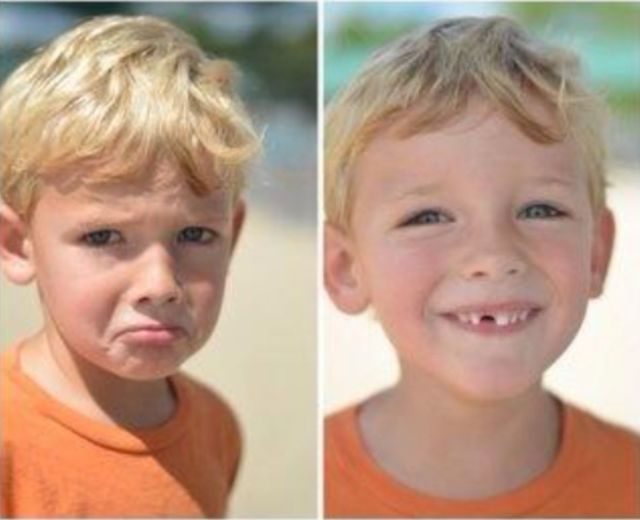 Sing the traditional song If you’re happy and you know it clap your hands. Introduce alternative feelings and actions, such as:
Sing the traditional song If you’re happy and you know it clap your hands. Introduce alternative feelings and actions, such as:
angry….stamp your feet, sad….have a cry, scared….hide and shake, brave….stand up tall
- Can you predict other people’s emotions? eg when you have news to share or when something unexpected happens
- Think of ways to change how someone feels. Can you make someone happy, can you give them a surprise?
- Draw pictures of things that make you feel sad, worried or angry and talk about ways to feel better.
CBeebies has some more feelings activities and songs you could try. https://www.bbc.co.uk/cbeebies/joinin/talking-to-your-child-about-emotions
“Men don’t feel sad”
Talking to children they frequently say men don’t feel sad, worried or frightened. They misread these signs as angry. So men in particular need to help children by explaining their feelings, eg “I know I shouted at you when you went out on the road but I felt frightened you might get hurt.”

As children misread men’s feelings, they often say men don’t need help and they don’t know how they manage their feelings. Dads, tell your child what helps you – “I feel sad not seeing Granny and Grandpa too but your cuddles make me feel better” – “I go for a walk when I feel angry.”
Please keep in touch as you explore your feelings together @GlenwoodFC #Glenwoodlearningathome
Follow these links for futher information:
Glenwood Emotional Intelligence Sway
|
Remote Learning – Minibeasts
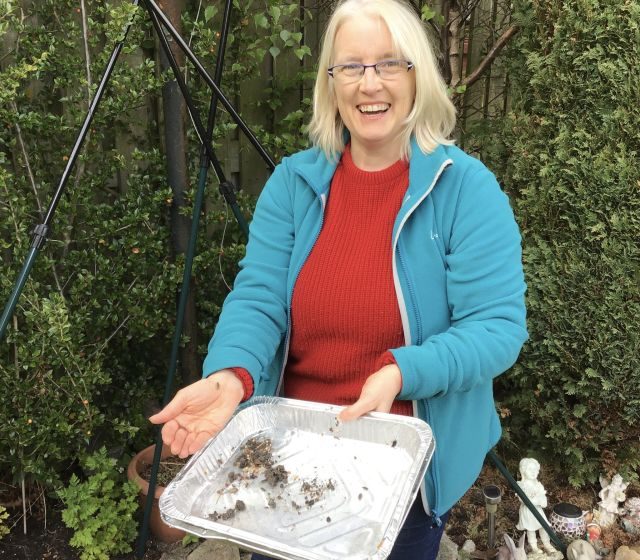 Children love exploring what they can find hidden under or in objects. Why not involve them in a minibeast hunt in the garden? This supports their curiosity by inviting them to look under stones or plant pots, to dig in the garden or to search other garden areas to discover minibeasts and where they can be found.
Children love exploring what they can find hidden under or in objects. Why not involve them in a minibeast hunt in the garden? This supports their curiosity by inviting them to look under stones or plant pots, to dig in the garden or to search other garden areas to discover minibeasts and where they can be found.
Finding the best places to search for minibeasts provides children with a problem solving experience as well as risk assessing the areas to keep safe. For example, care will need to be taken with possible hazards such as overhanging branches, uneven ground or slippery surfaces.
Some children love to pick up minibeasts, holding them in their hands. Providing a container or small spade may allow some children the opportunity to scoop up a minibeast to have a closer look if they prefer not to touch them. Using a magnifying glass is also a great way to look at them in close detail. Your child might enjoy drawing or painting a picture of the minibeasts they find, or perhaps like to take some photographs or make a model.
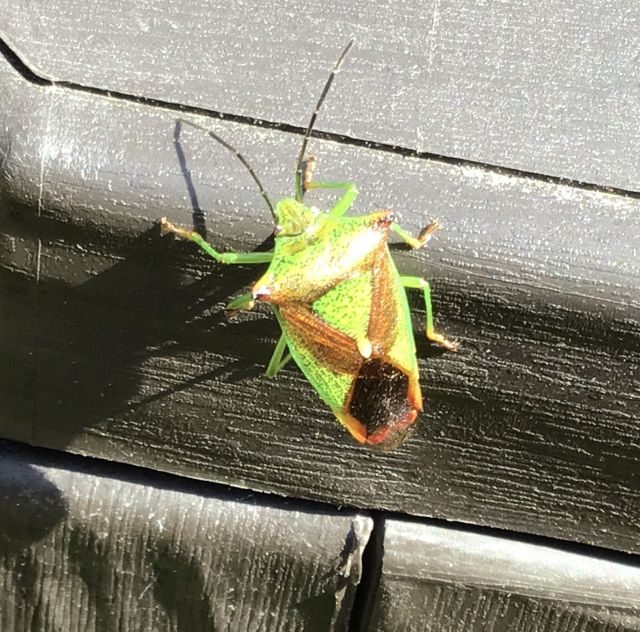
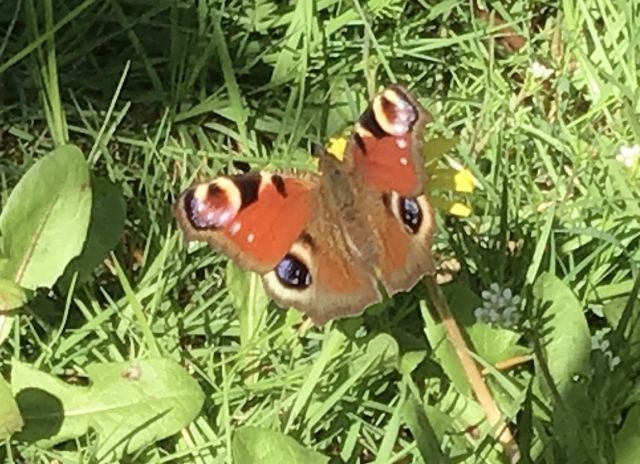 As children play and investigate the world around them you may hear them developing their numeracy skills as they count the number of legs on the minibeasts or the number of each minibeast they find. They will be excited to share news of their discoveries and recognise colours while talking about the characteristics of each minibeast.
As children play and investigate the world around them you may hear them developing their numeracy skills as they count the number of legs on the minibeasts or the number of each minibeast they find. They will be excited to share news of their discoveries and recognise colours while talking about the characteristics of each minibeast.

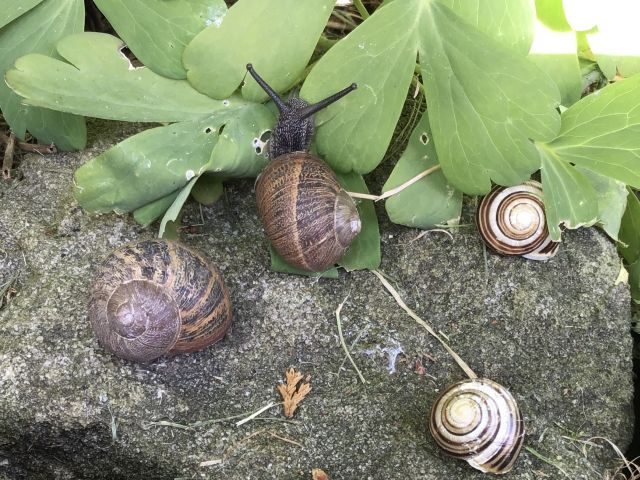 Searching for minibeasts in the natural outdoor environment also provides a great opportunity for children to learn about habitats and what creatures need to survive. It also provides an opportunity to ask open-ended questions to encourage children to chat and further investigate minibeasts:
Searching for minibeasts in the natural outdoor environment also provides a great opportunity for children to learn about habitats and what creatures need to survive. It also provides an opportunity to ask open-ended questions to encourage children to chat and further investigate minibeasts:
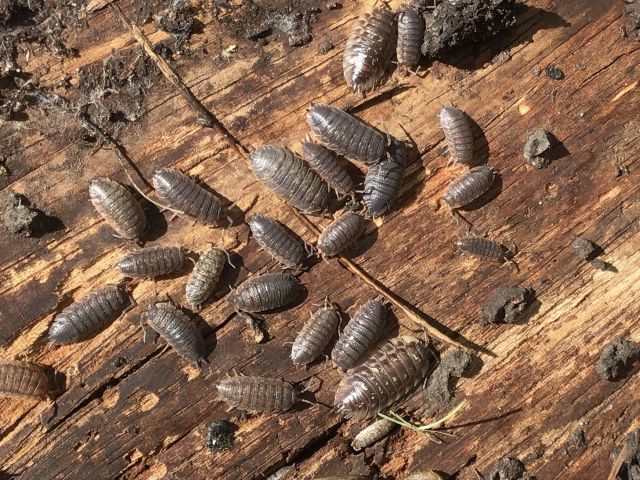 ‘Where do you think that beetle might live?’
‘Where do you think that beetle might live?’
‘I wonder why we found these woodlice hiding under the piece of wood.’
‘Why do you think this spider is climbing on the cane?’
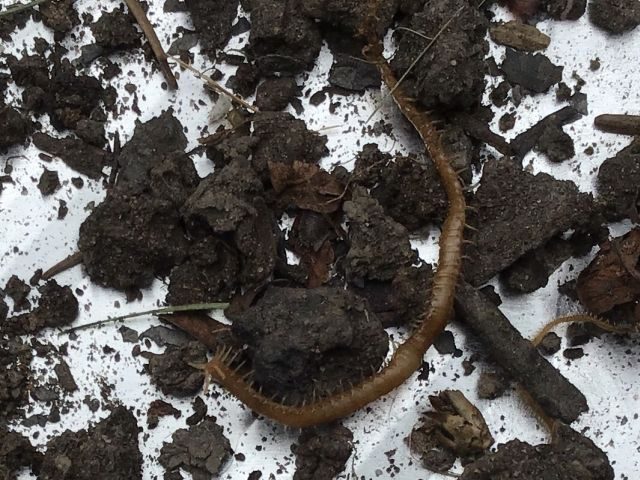 ‘I don’t recognise this minibeast. How are we going to find out what it is called?’
‘I don’t recognise this minibeast. How are we going to find out what it is called?’
Using a minibeast chart can be a fun way to identify and tick off the ones you find. You could make your own chart or here’s one you could use:
https://www.woodlandtrust.org.uk/blog/2019/04/minibeast-hunt/
Use the minibeasts you find to make comparisons and predictions:
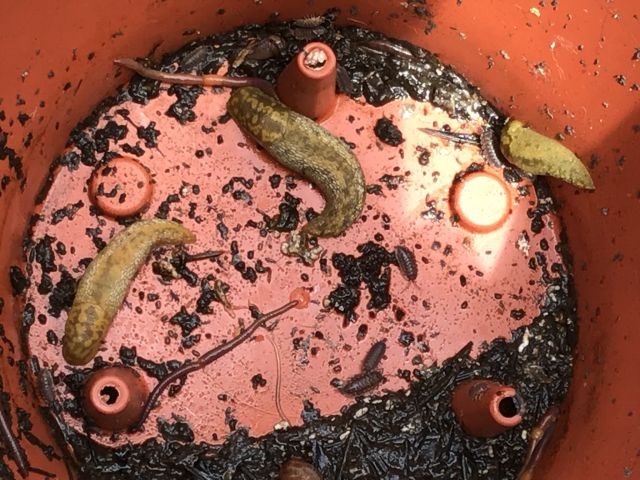 ‘Which is the longest/shortest worm?’
‘Which is the longest/shortest worm?’
‘Which minibeast has the most/least legs?’
‘Which snail do you think will move fastest?’
Another fun way of finding minibeasts in your garden is to make a pitfall trap. Minibeasts that are moving on the ground nearby will fall in and you can check the next day to see what has been trapped. Further information and instructions about pitfall traps can be found by clicking on this link.
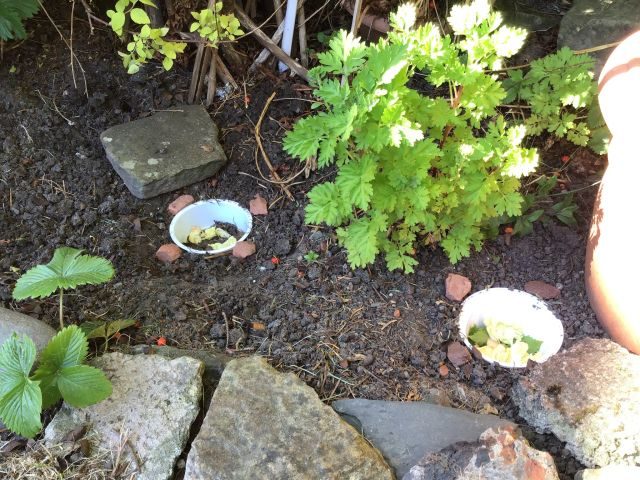
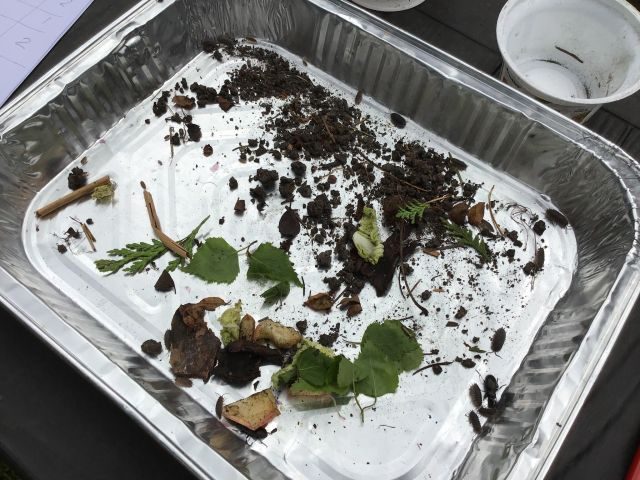
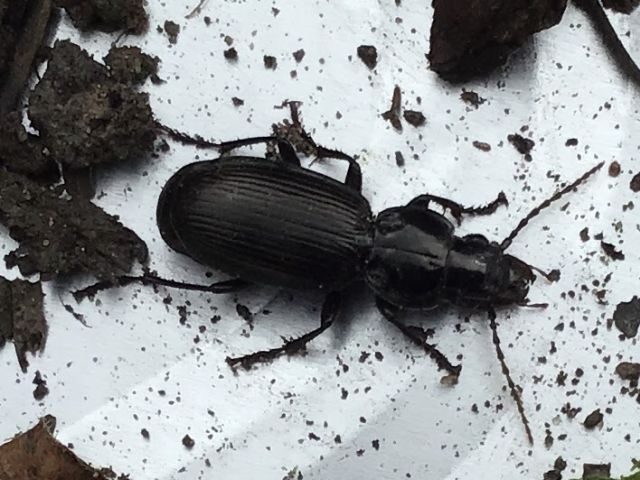 Remember that minibeasts are very small and need to be handled carefully. If you do pick them up, always put them back where you found them. Don’t forget to wash your hands when you are finished.
Remember that minibeasts are very small and need to be handled carefully. If you do pick them up, always put them back where you found them. Don’t forget to wash your hands when you are finished.
Hope you have had fun trying out these minibeast ideas. Please remember to share your child’s learning by tweeting @GlenwoodFC #Glenwoodlearningathome
Remote Learning – More PE at Home
Exercise keeps us healthy and taking part in fun games can improve our coordination and movement skills. Here are some more fun ideas for keeping active…
Animal Actions
Pretend to be different animals. Can you….
Prowl like a tiger (crawl on hands and knees)
Walk like a bear (crawl with your hands and feet on the floor)
Balance like a flamingo
Slither like a snake
Gallop like a horse
Walk tall like a giraffe
Walk sideways like a crab
Flap your wings like a bird
Obstacle Course
Can you build an indoor obstacle course? Don’t forget that building and tidying up the course is also part of your exercise! Here are some ideas to get you started but we’re sure you can use your imagination to think of more!
- Something to crawl under – a tunnel, a row of chairs, a cardboard box.
- Something to balance on – a plank of wood, a line of masking tape
- Something to throw – A ball, a teddy bear, rolled up socks
- Something to throw into – a bucket, a basin, a toy box
- Something to balance on your head – a bean bag, a teddy bear, a cushion
- Something to jump over – a rope, a cushion, a teddy bear
- Something to dribble a ball around – cushions, chairs, teddy bears
Mrs McGrory has put together some other ideas of games you can play with your family in this Sway.
| Fun ways to exercise | |
| During our gym sessions we like to do a warm-up game called the bean game. To play this game you have to run around until someone calls out one of the types of bean. There are many differen… | |
|
Remember to share some of your pictures with us on Twitter @GlenwoodFC #Glenwoodlearningathome
|
|









